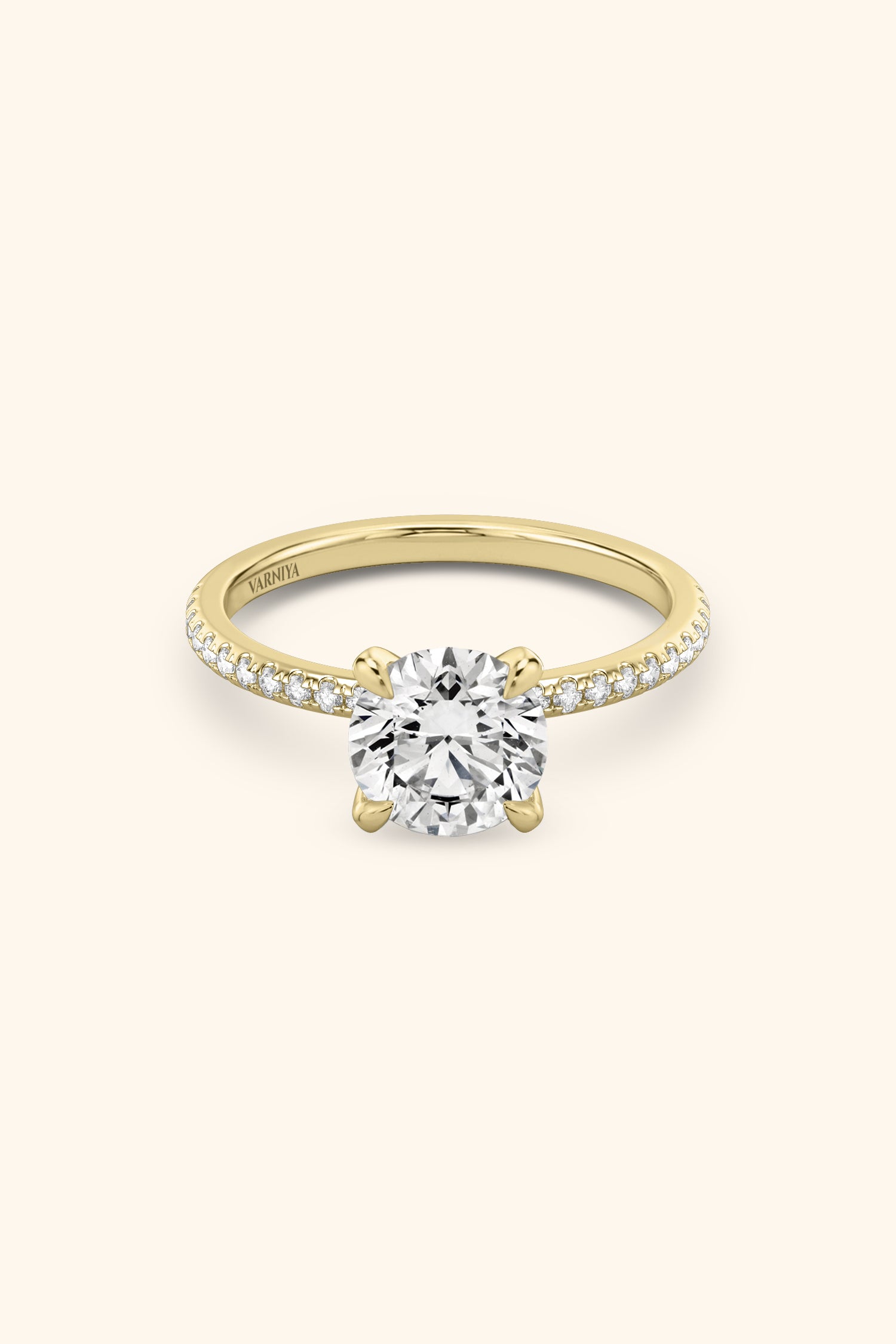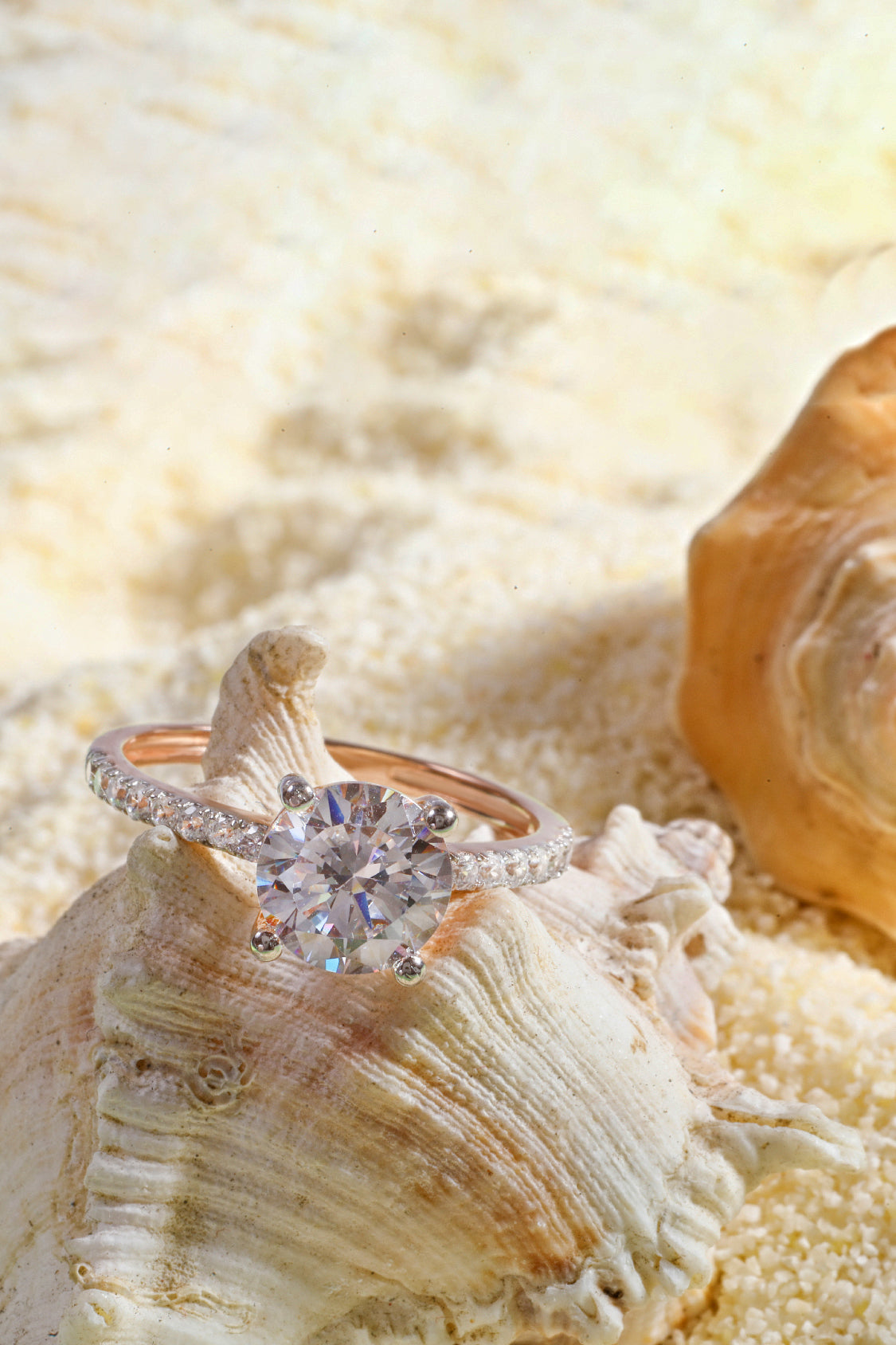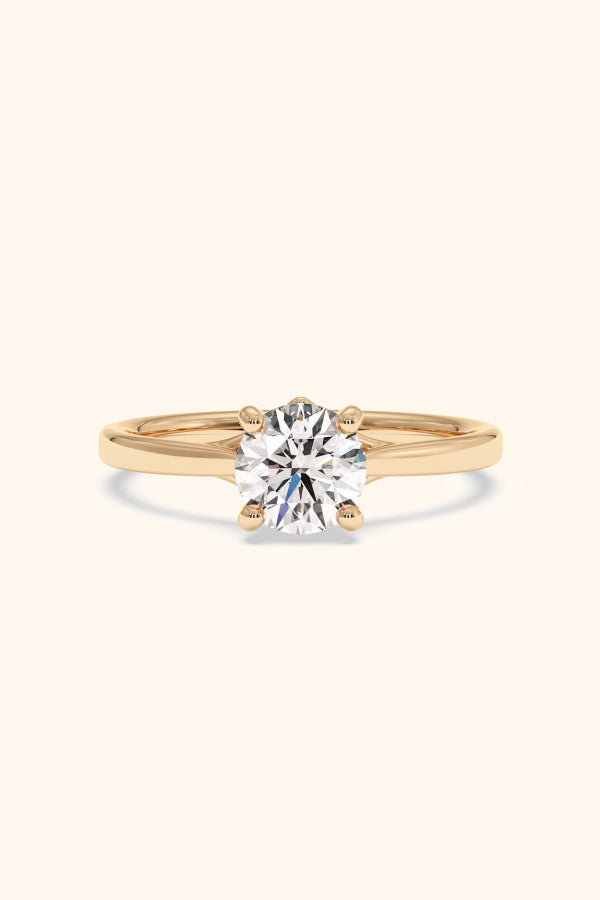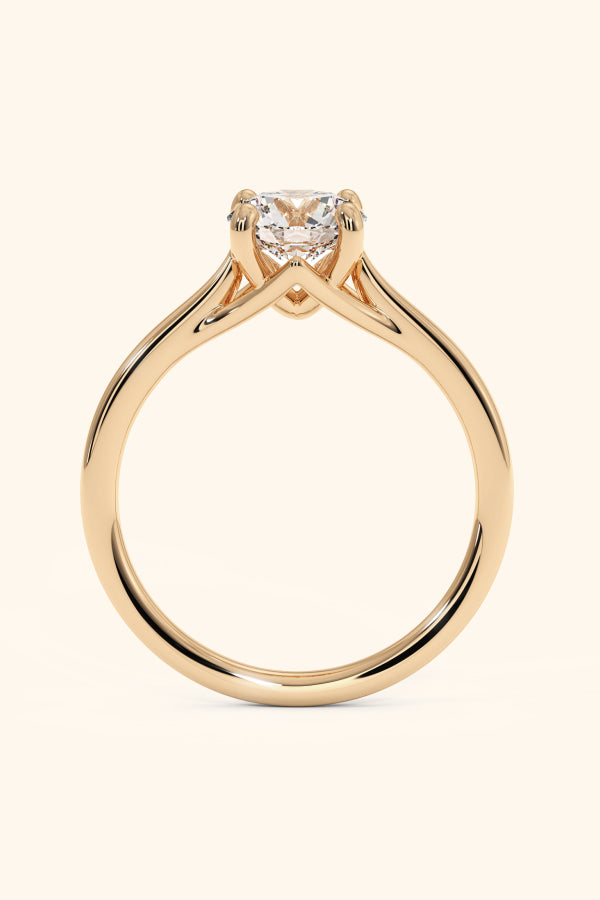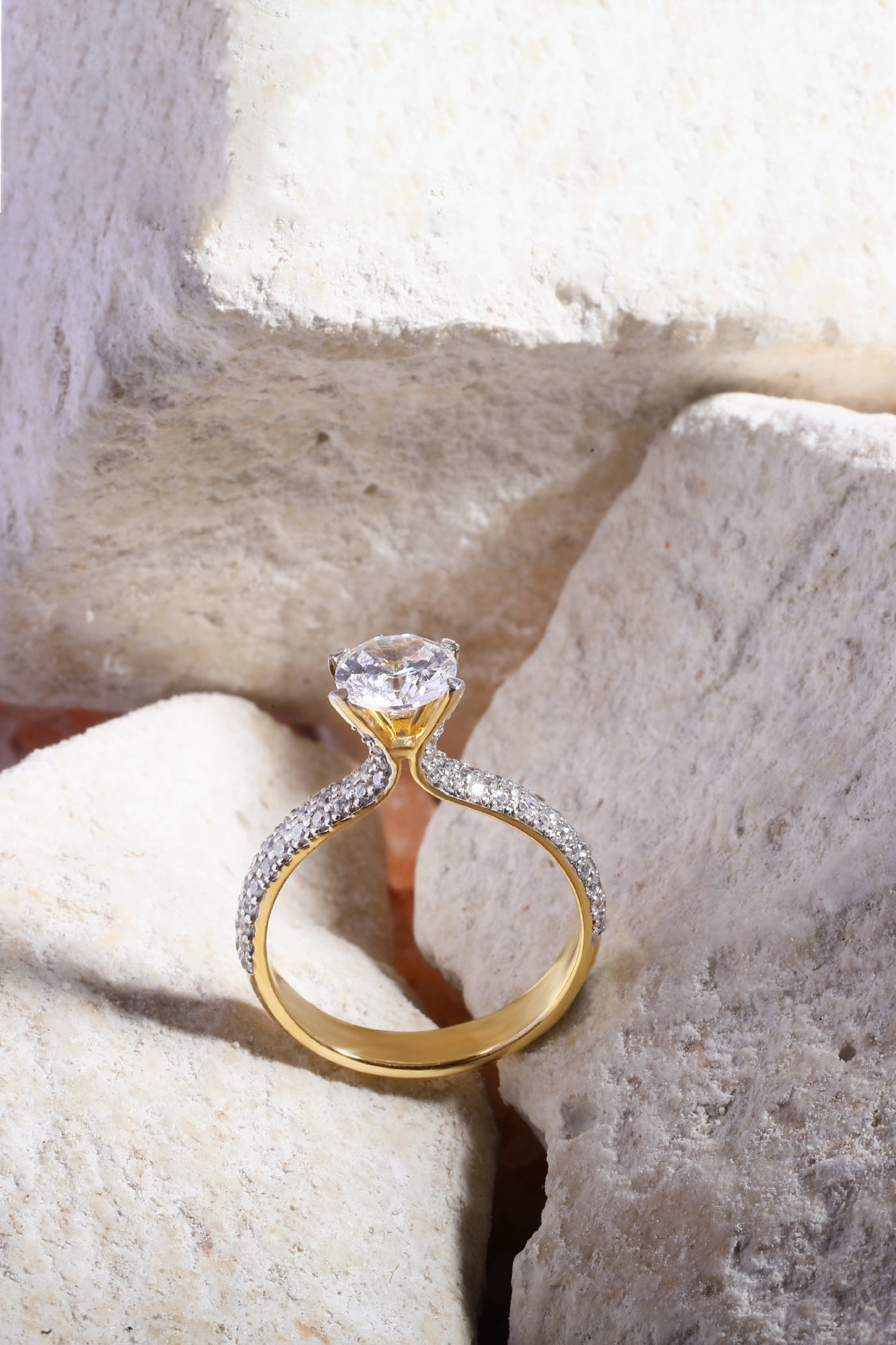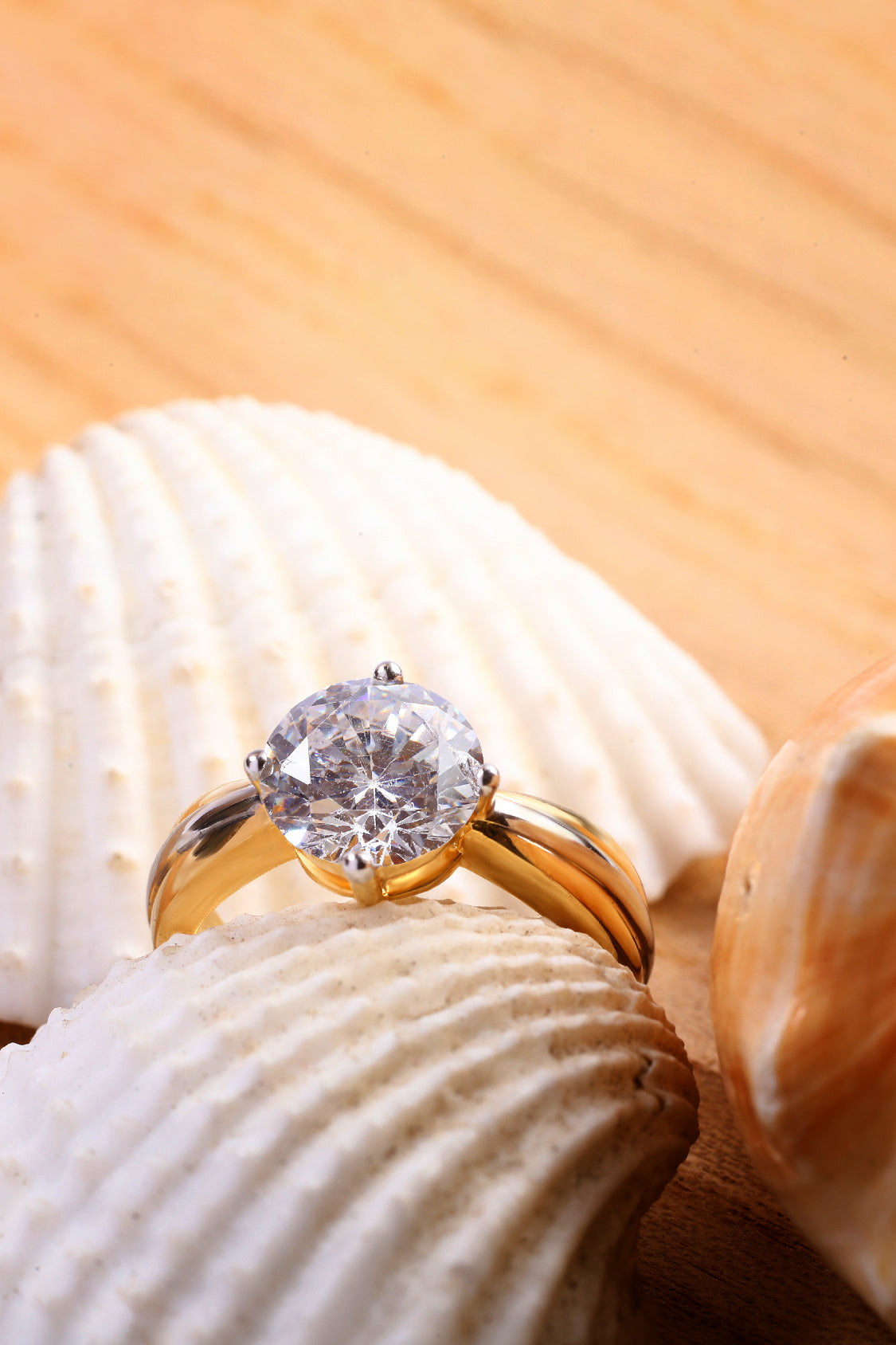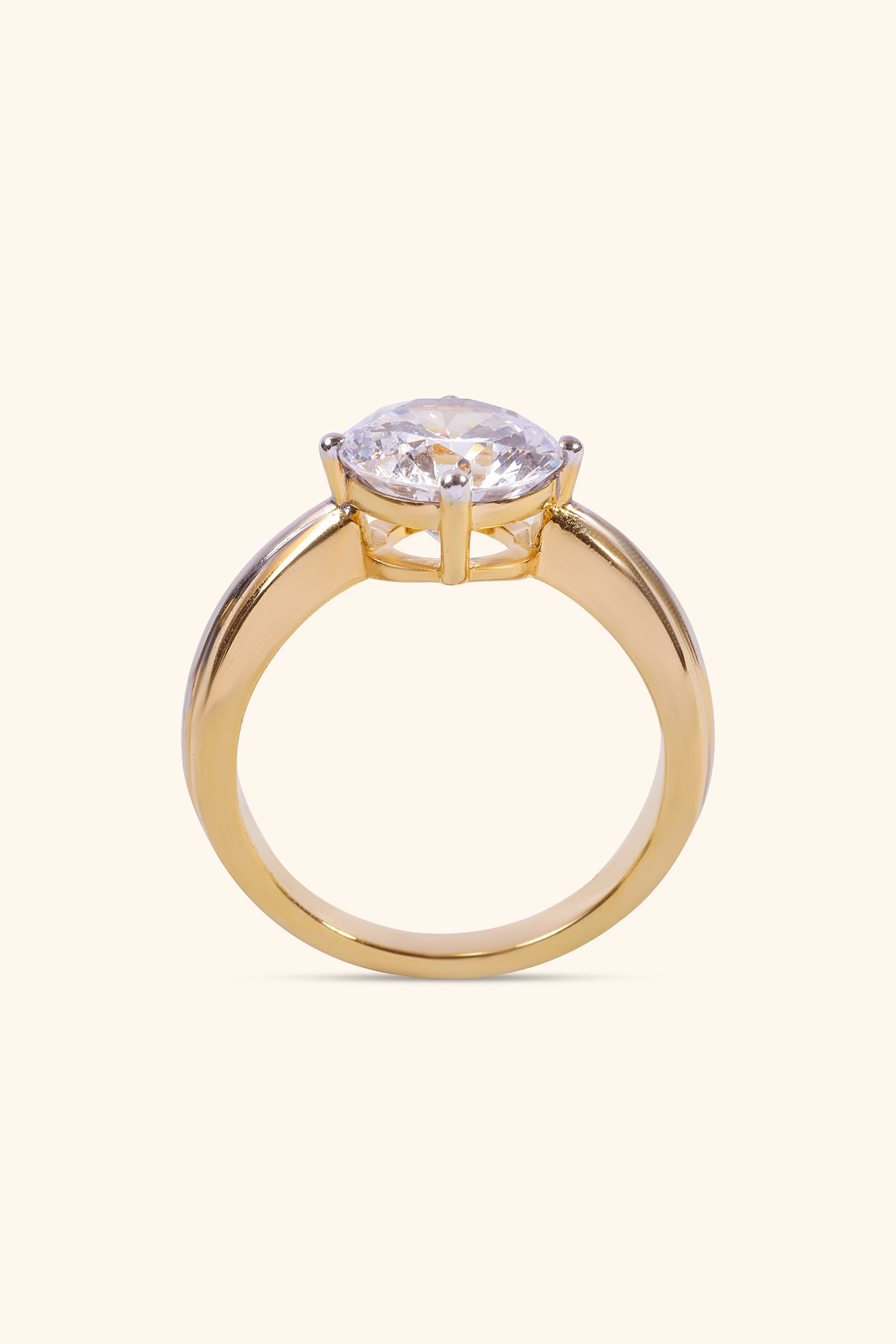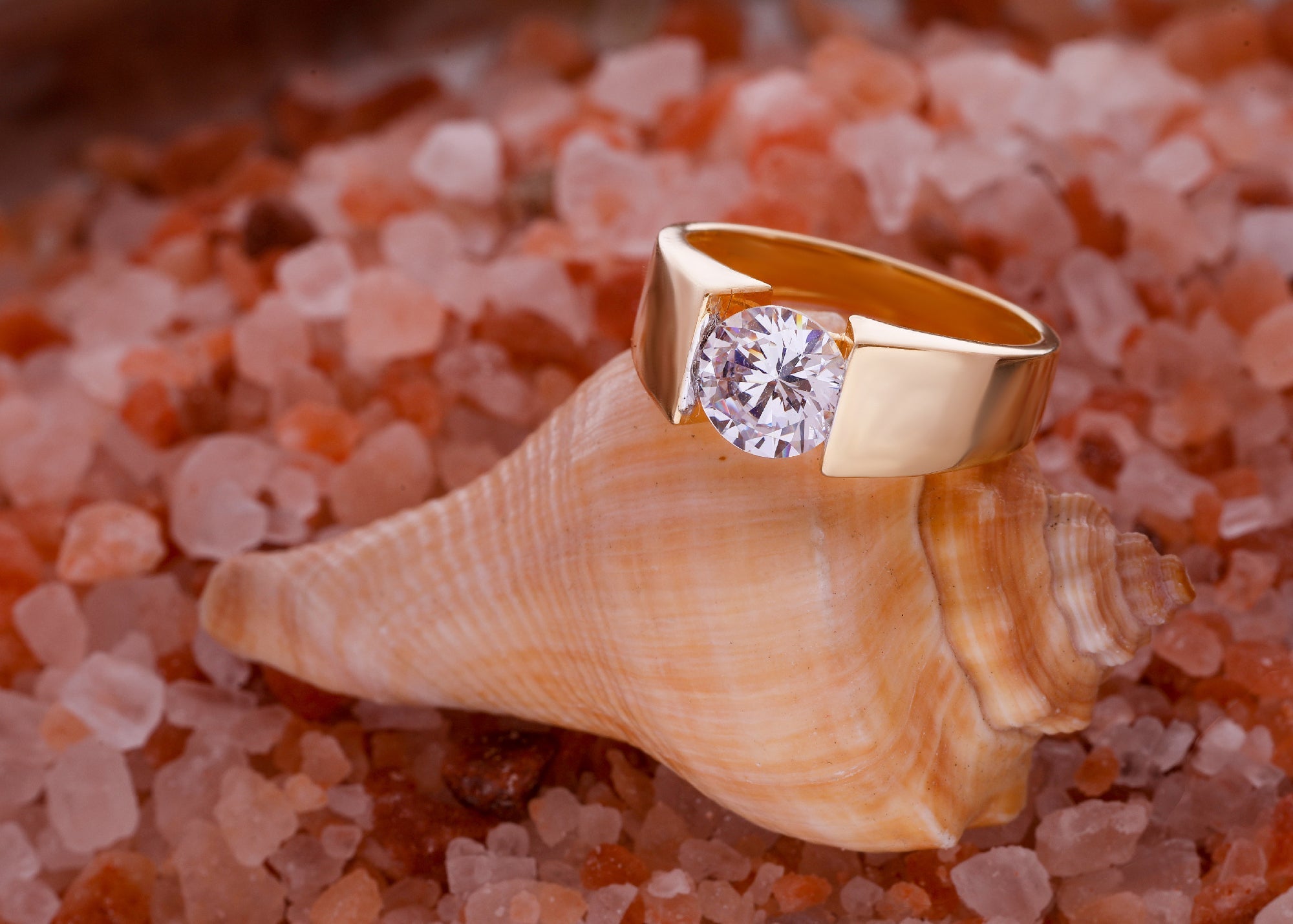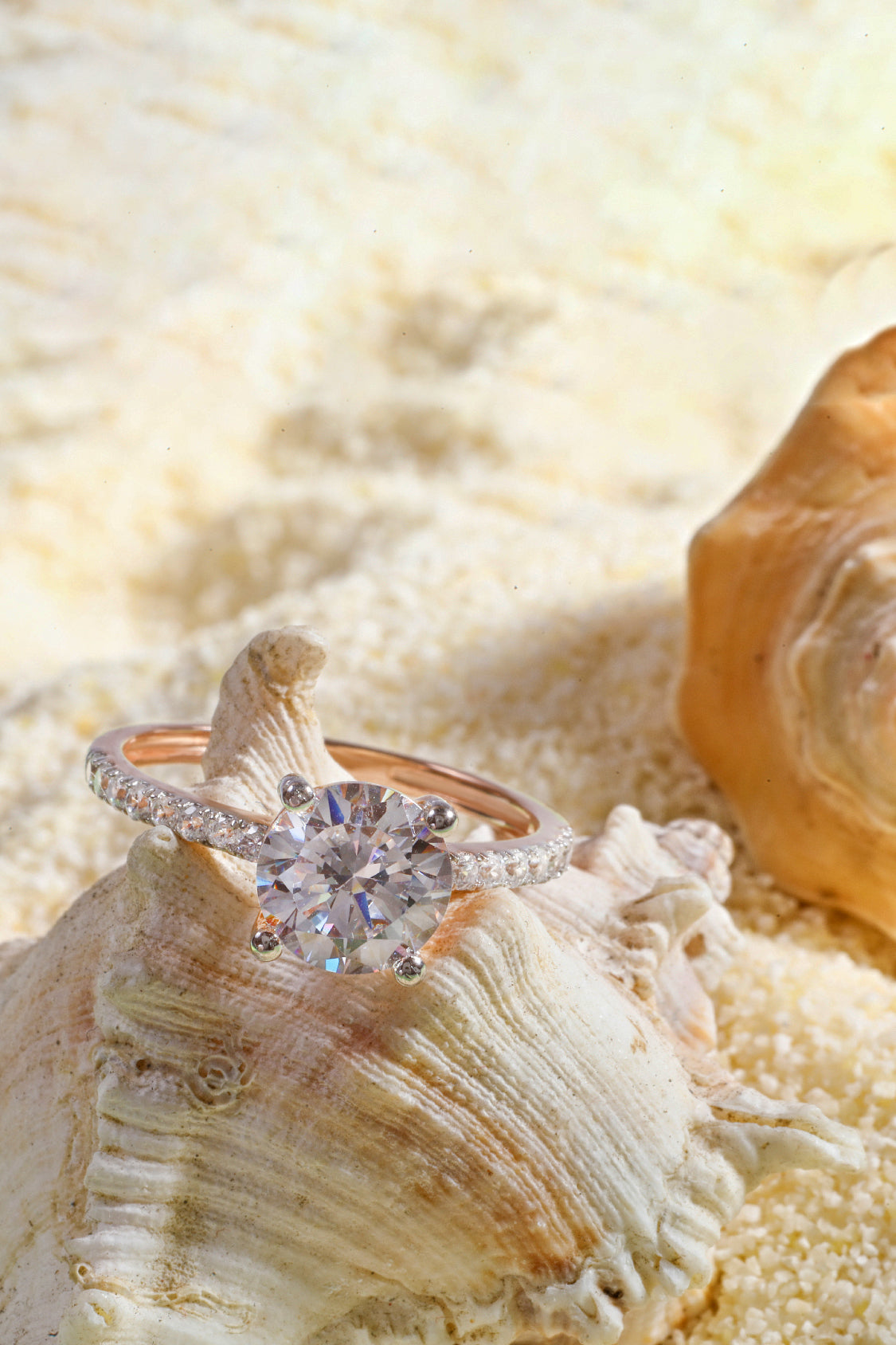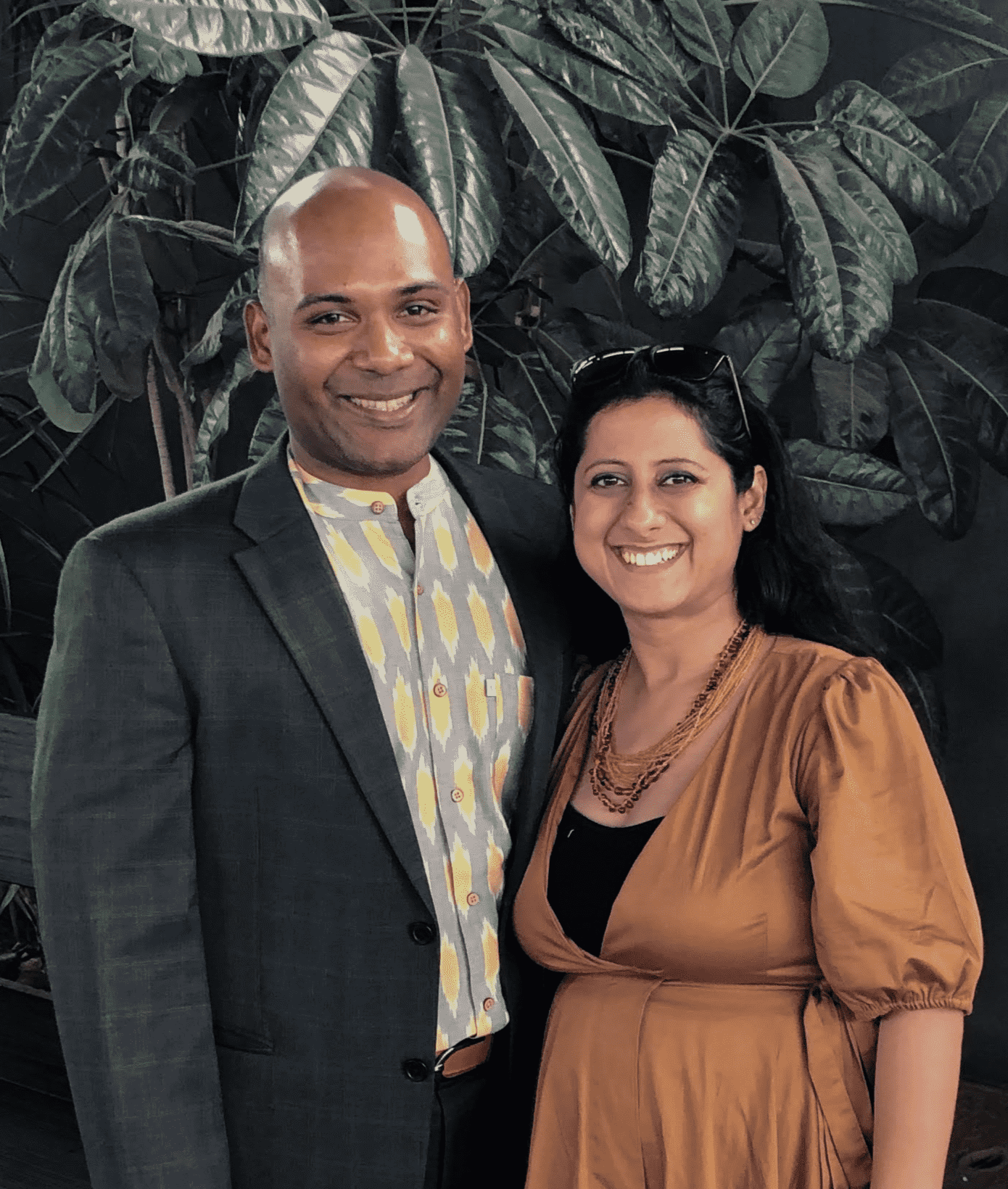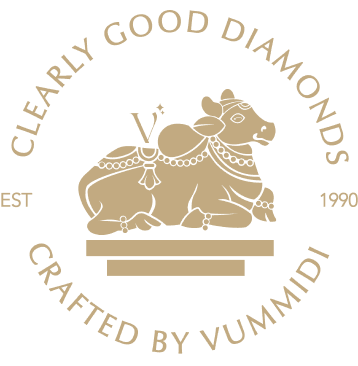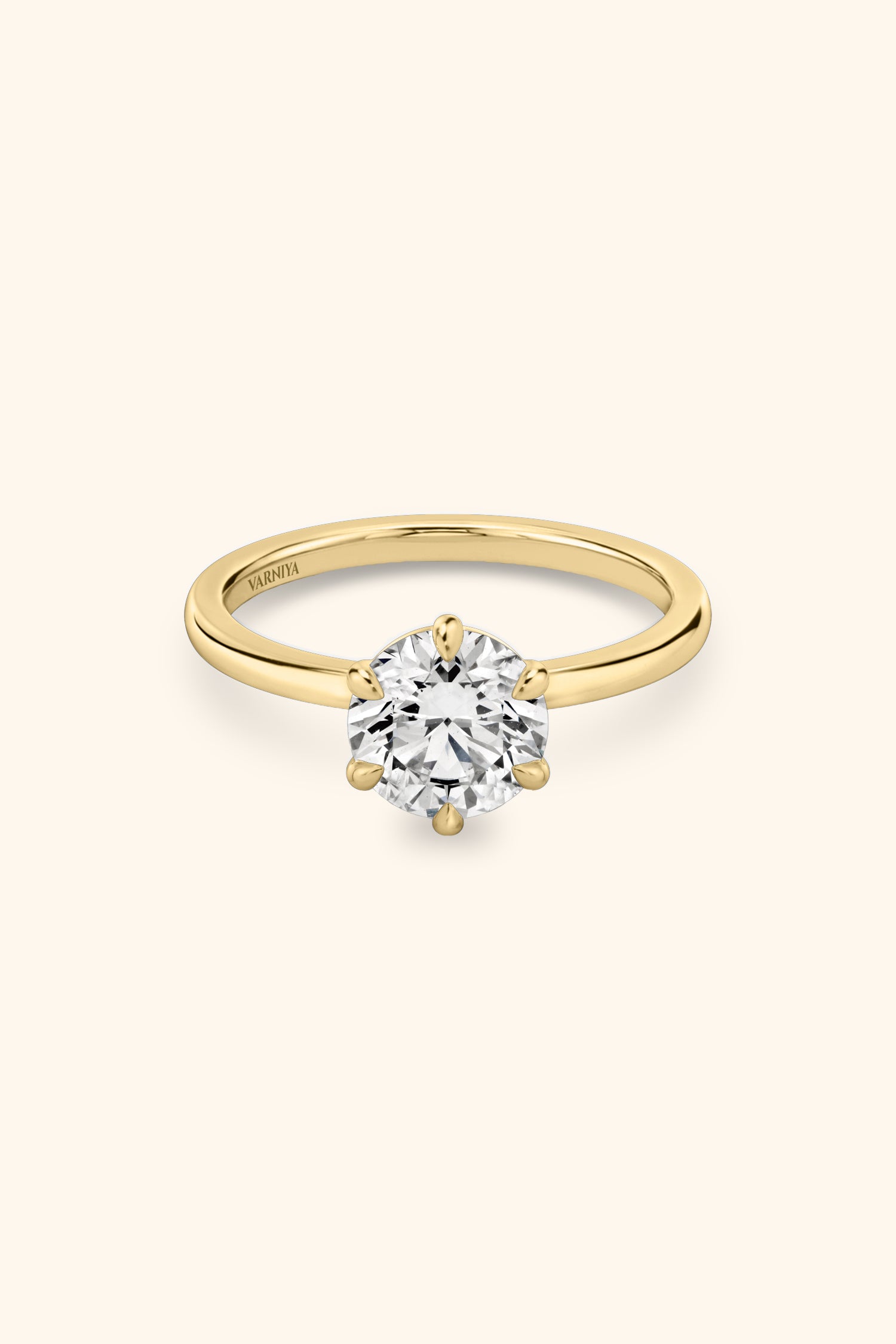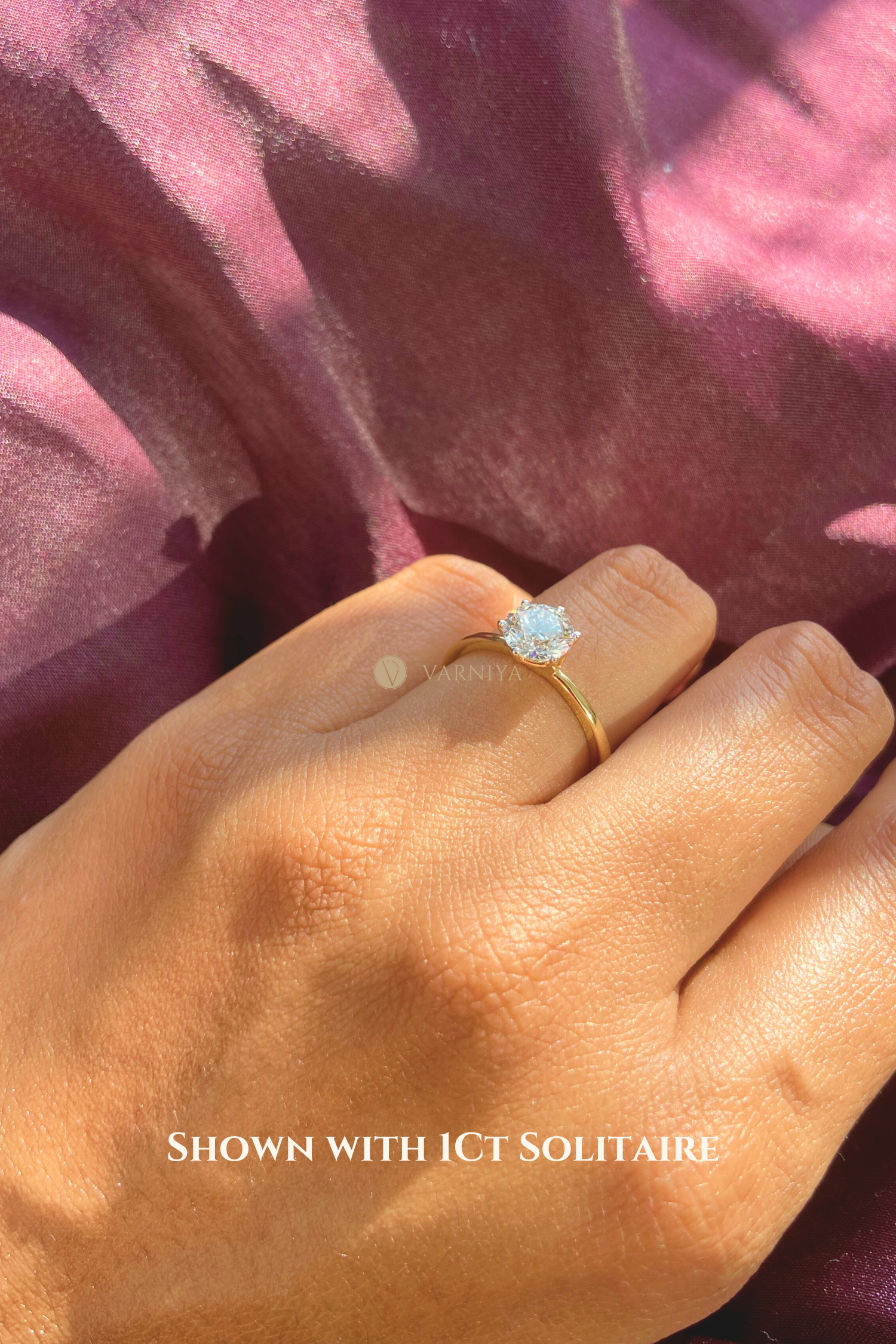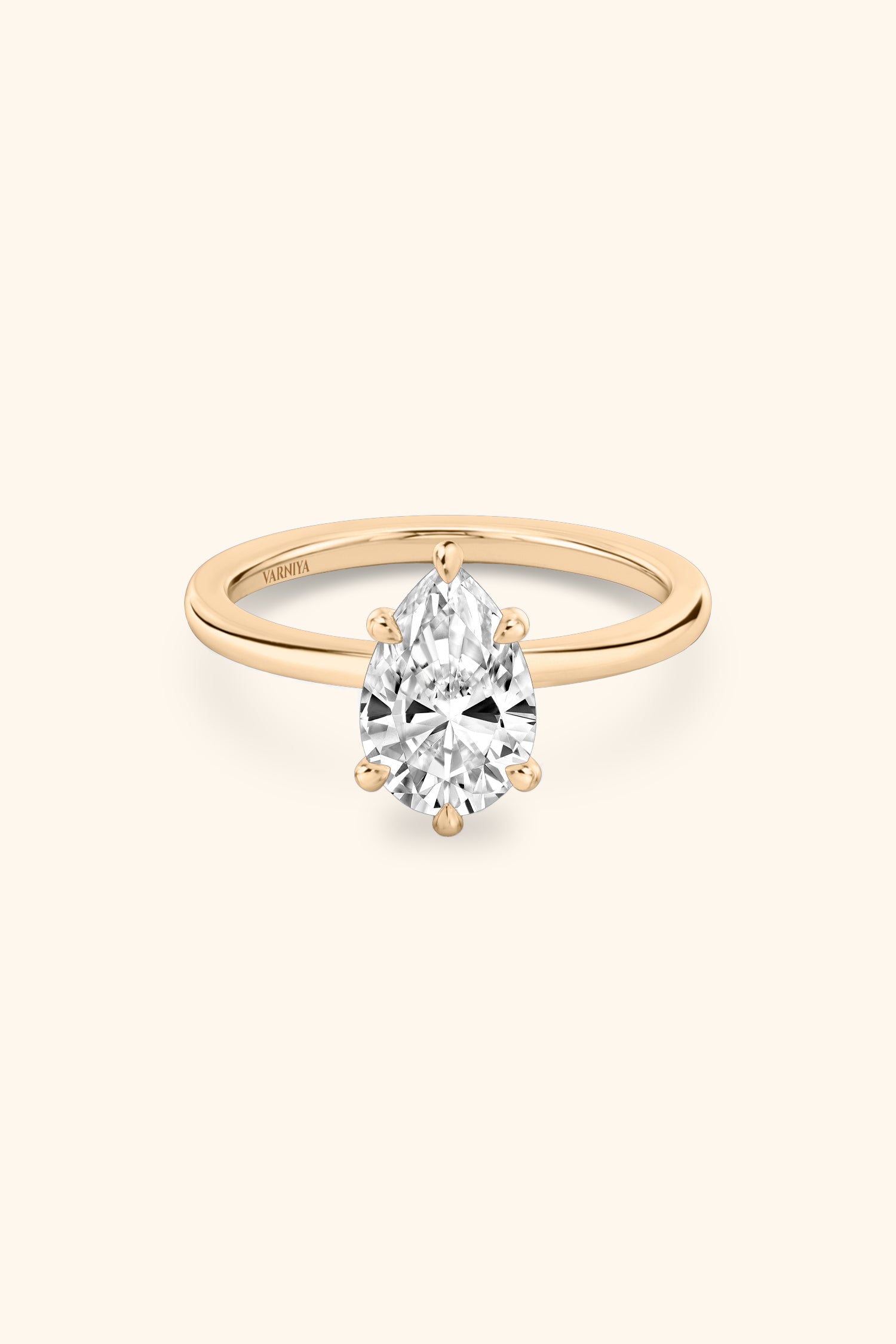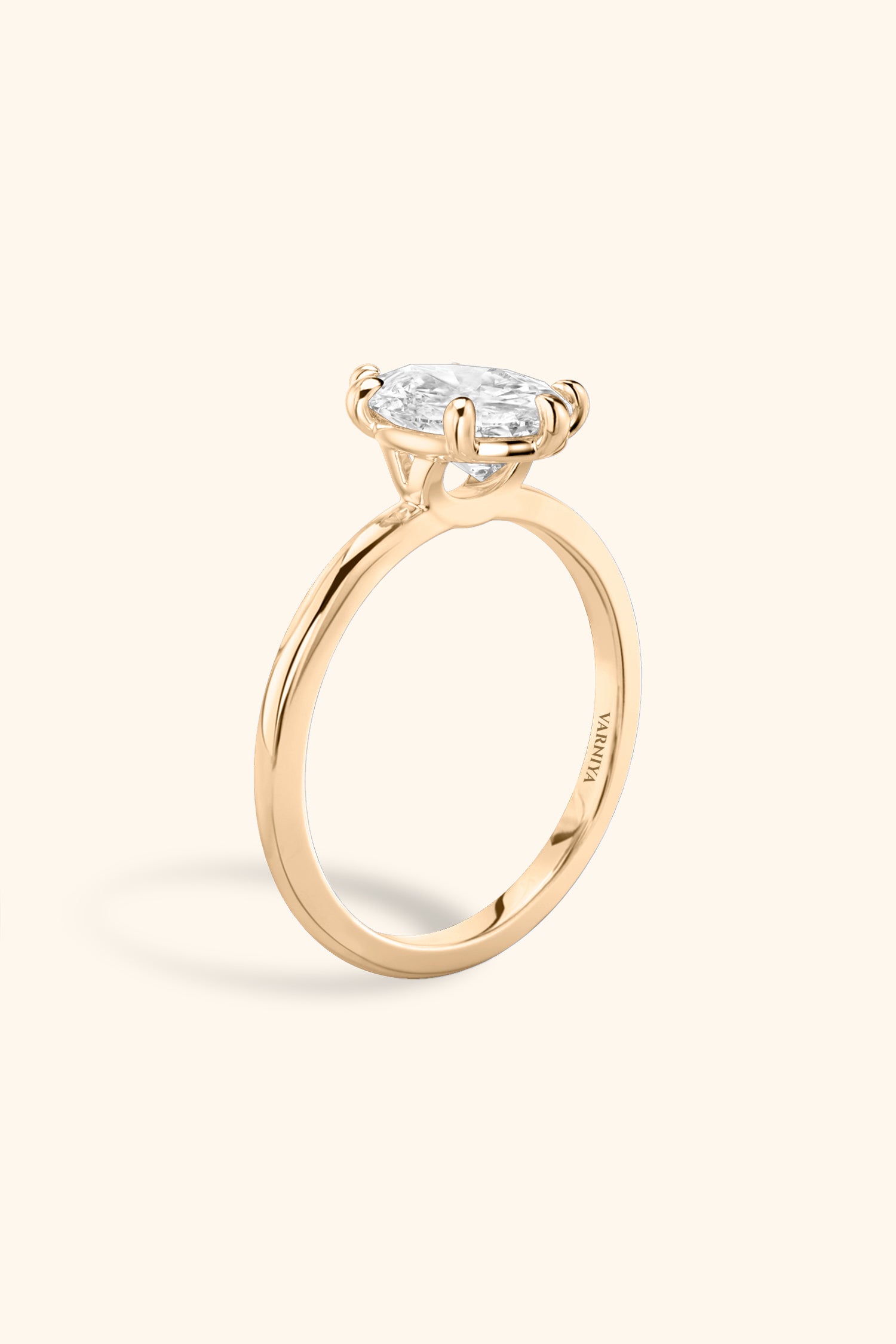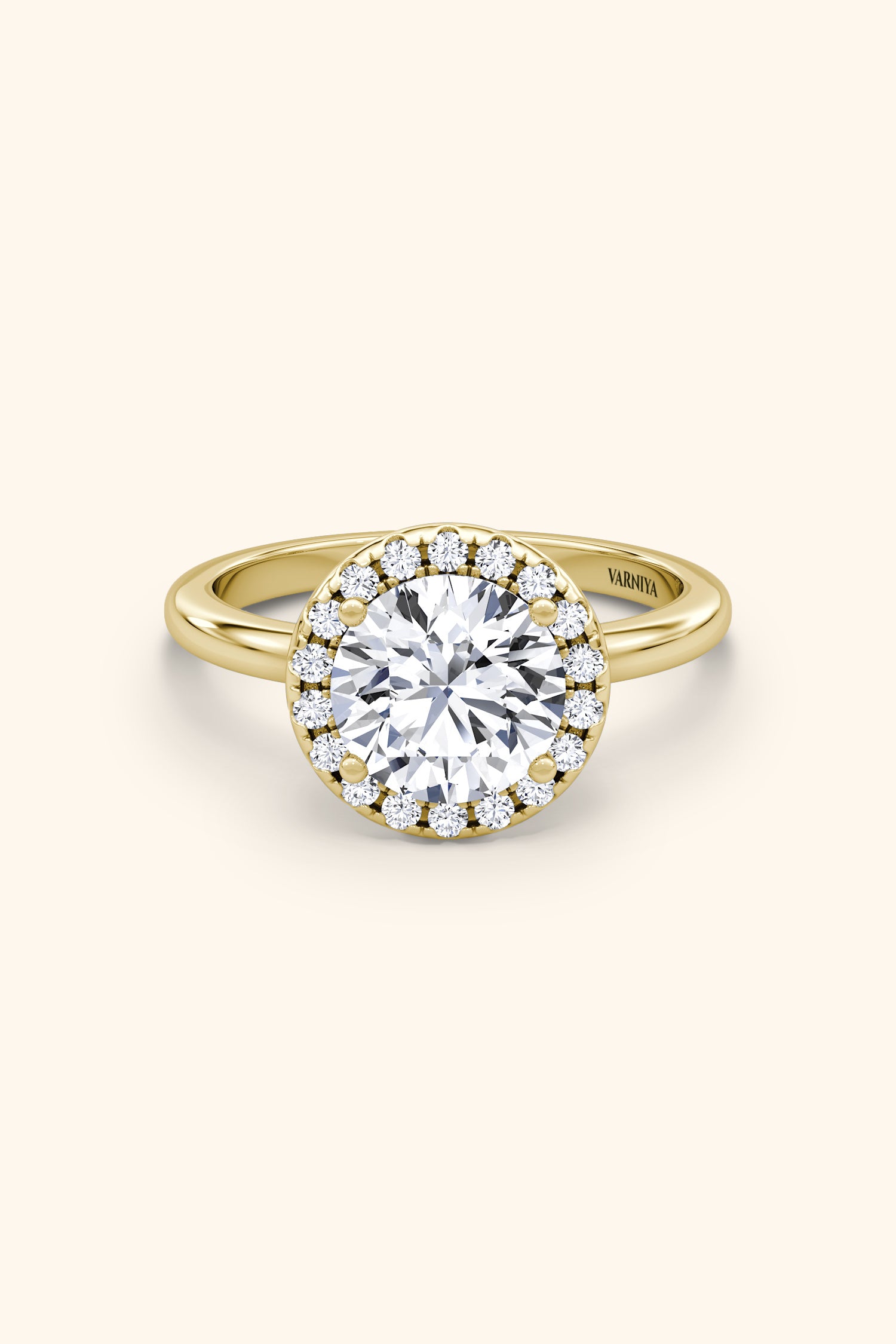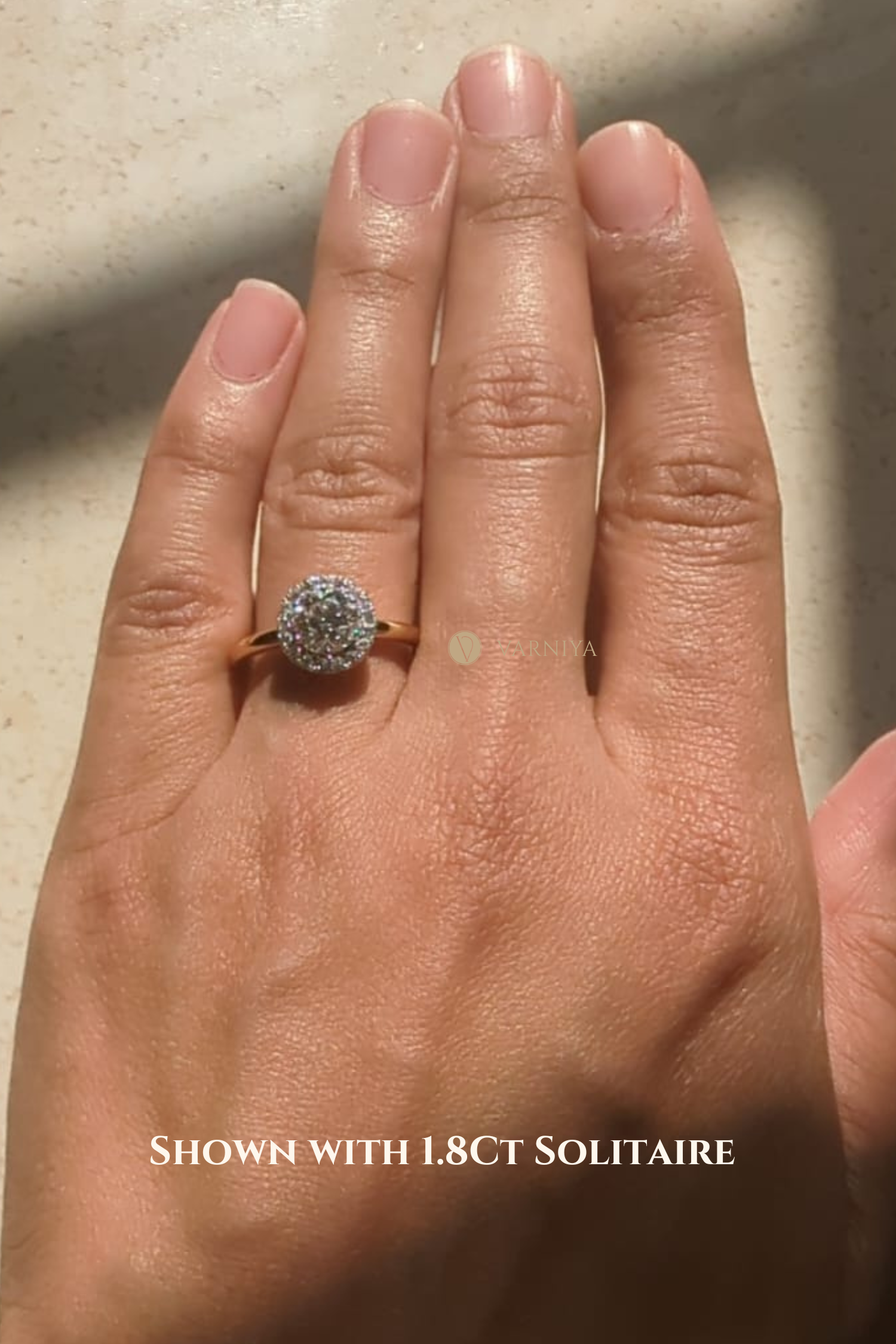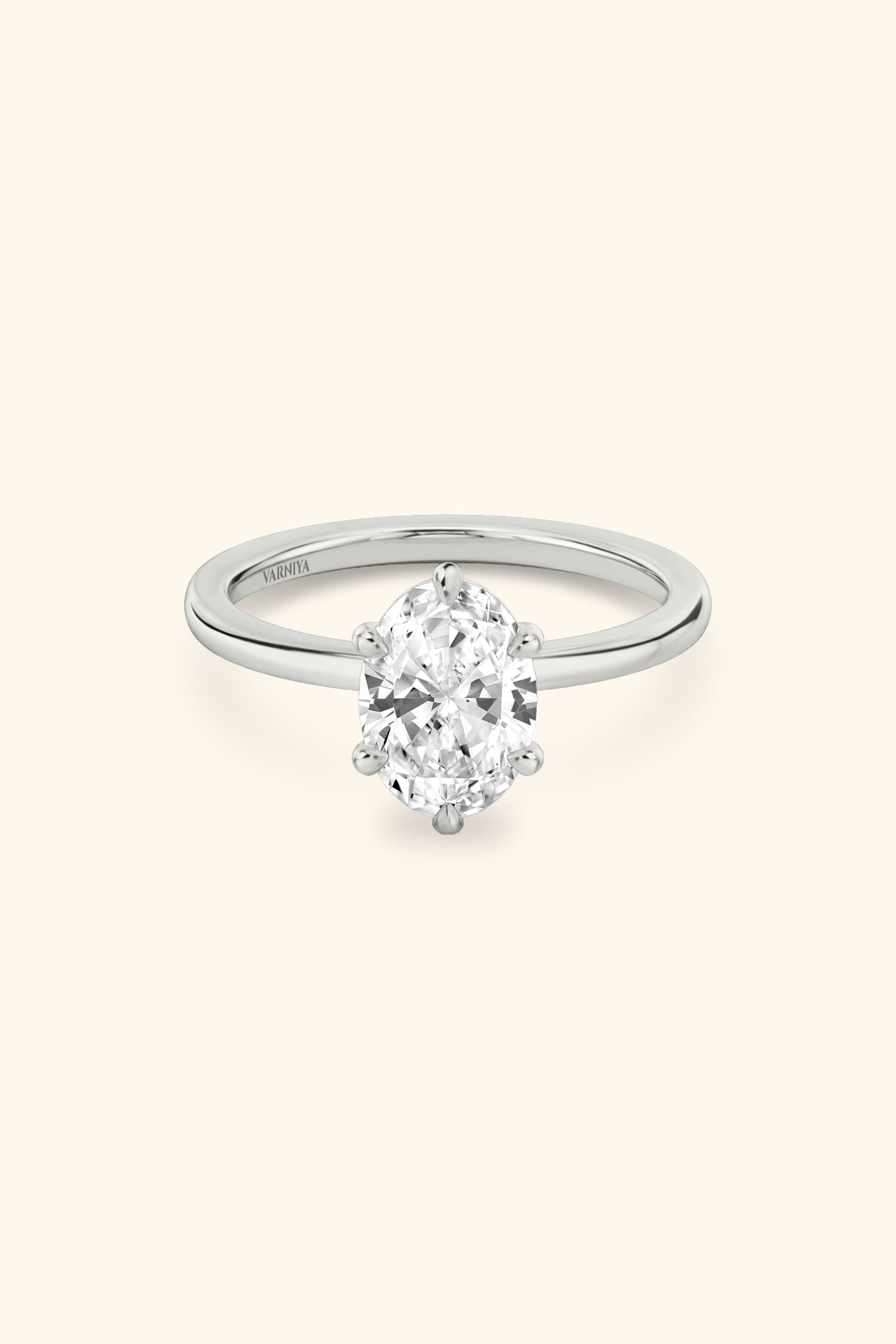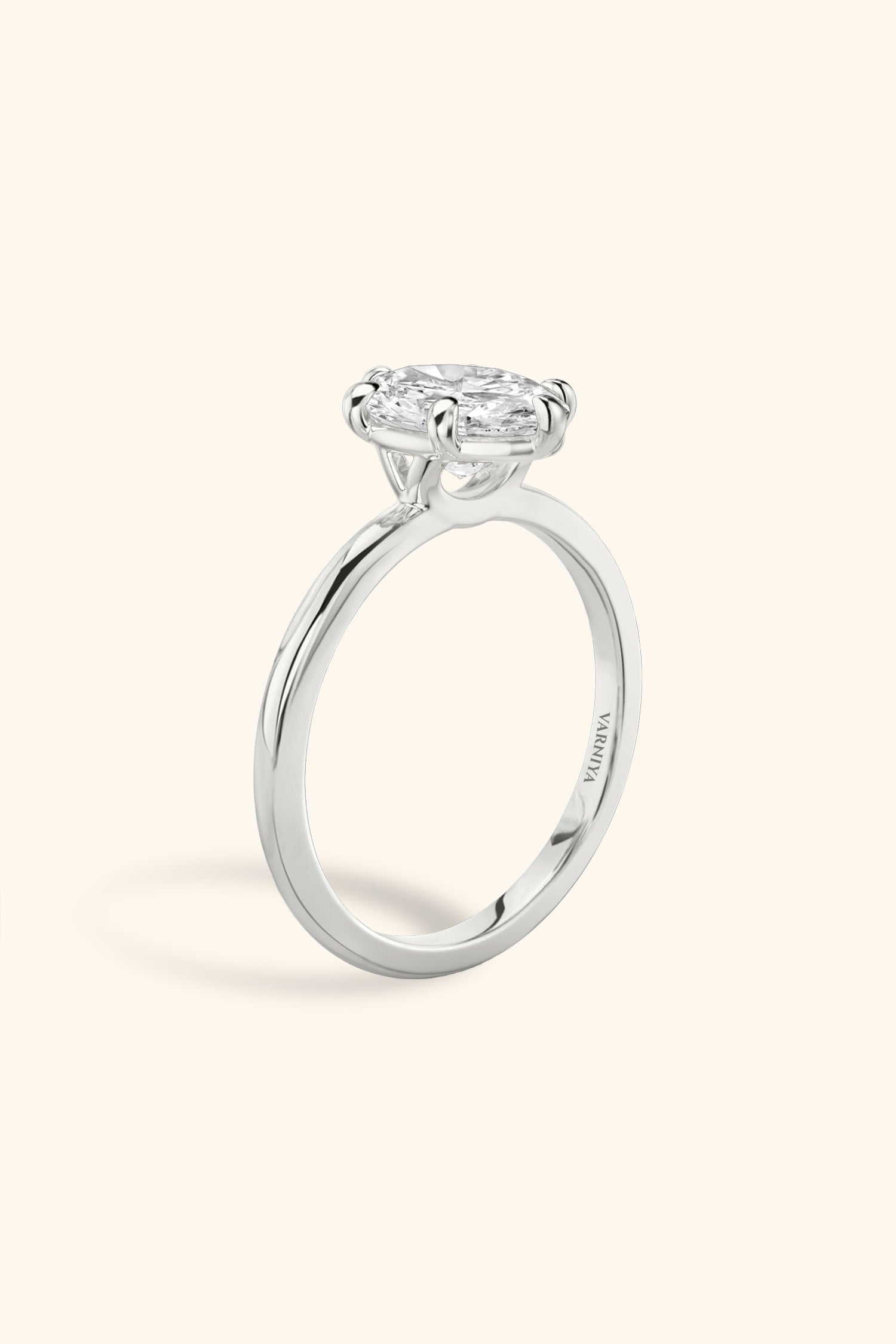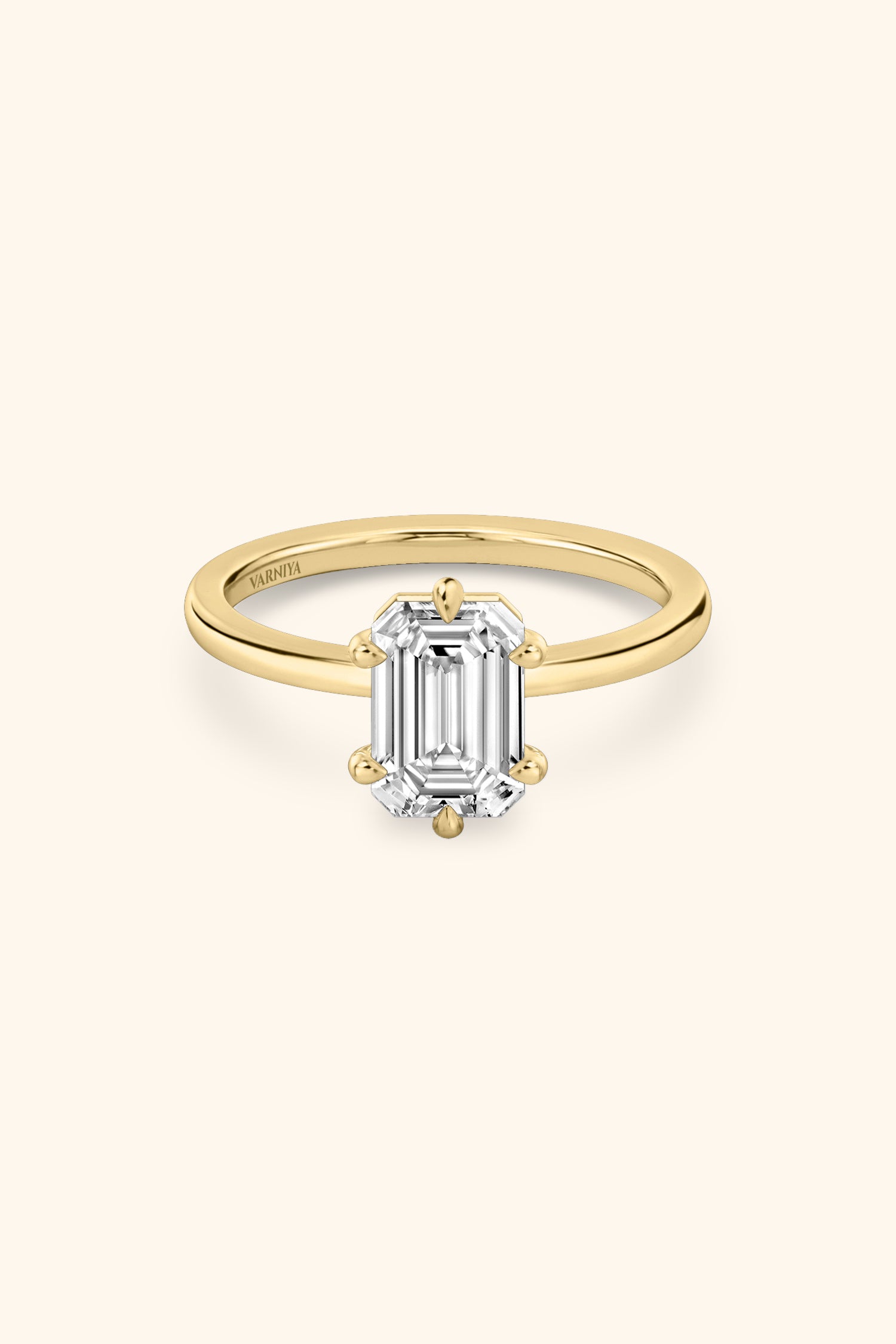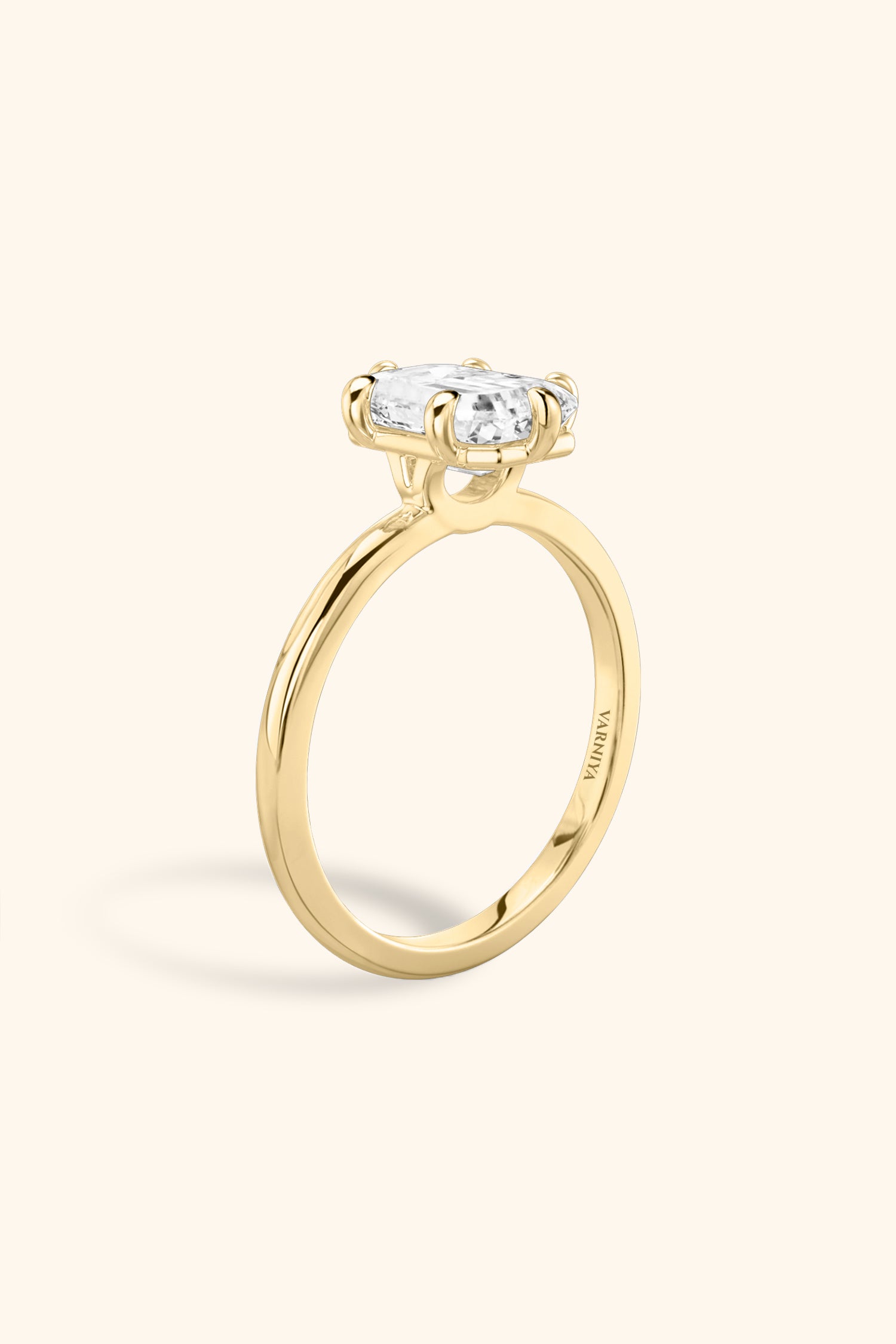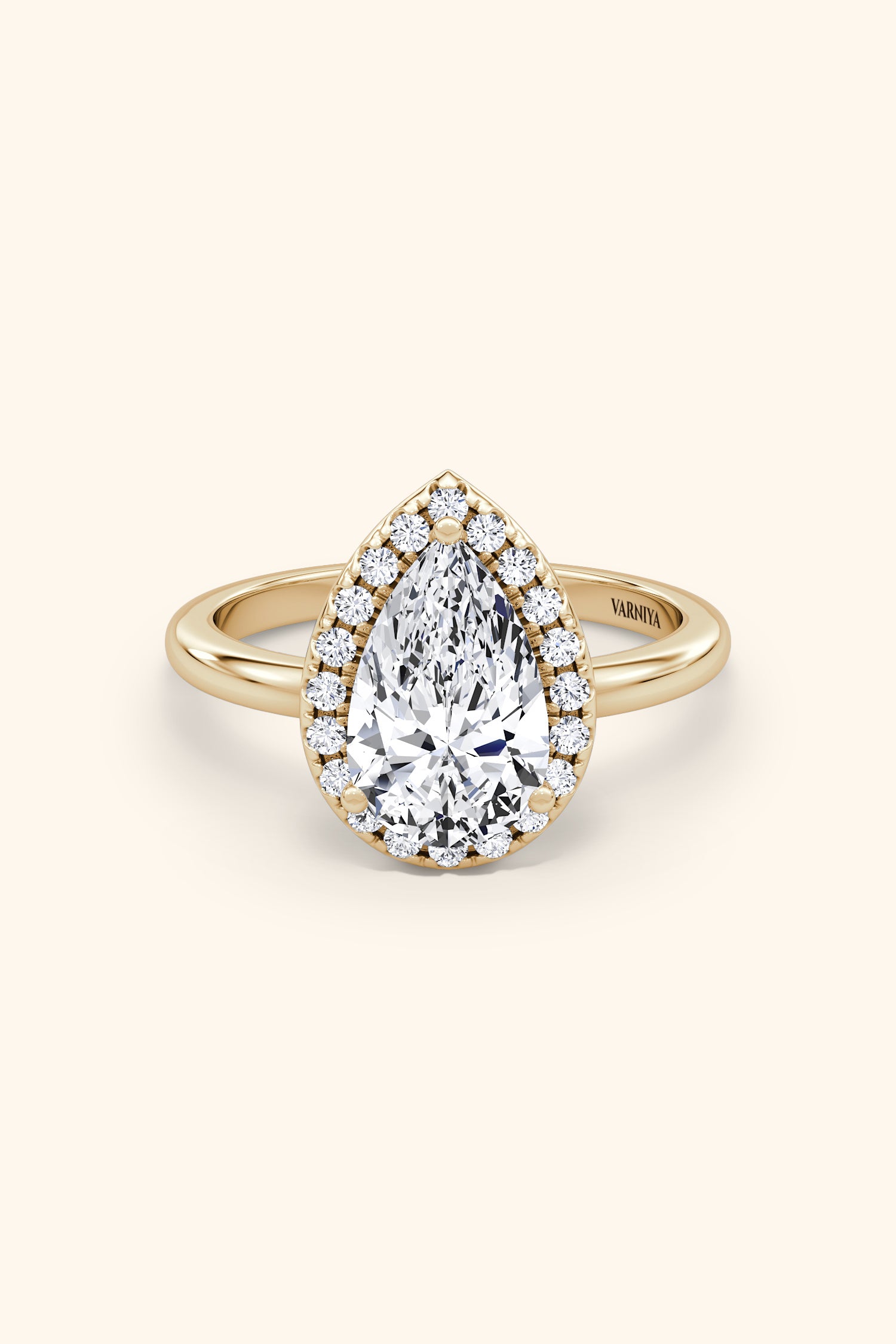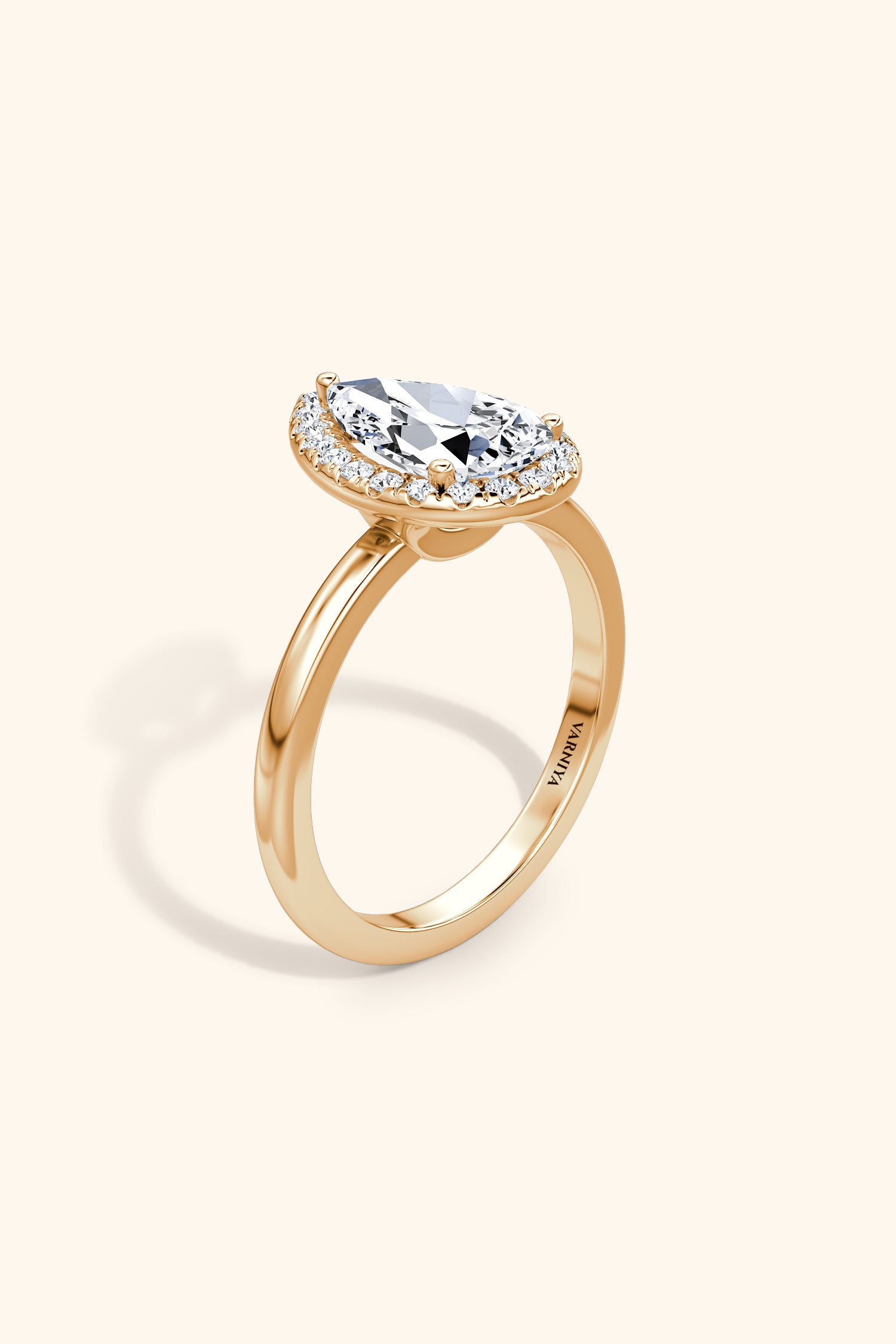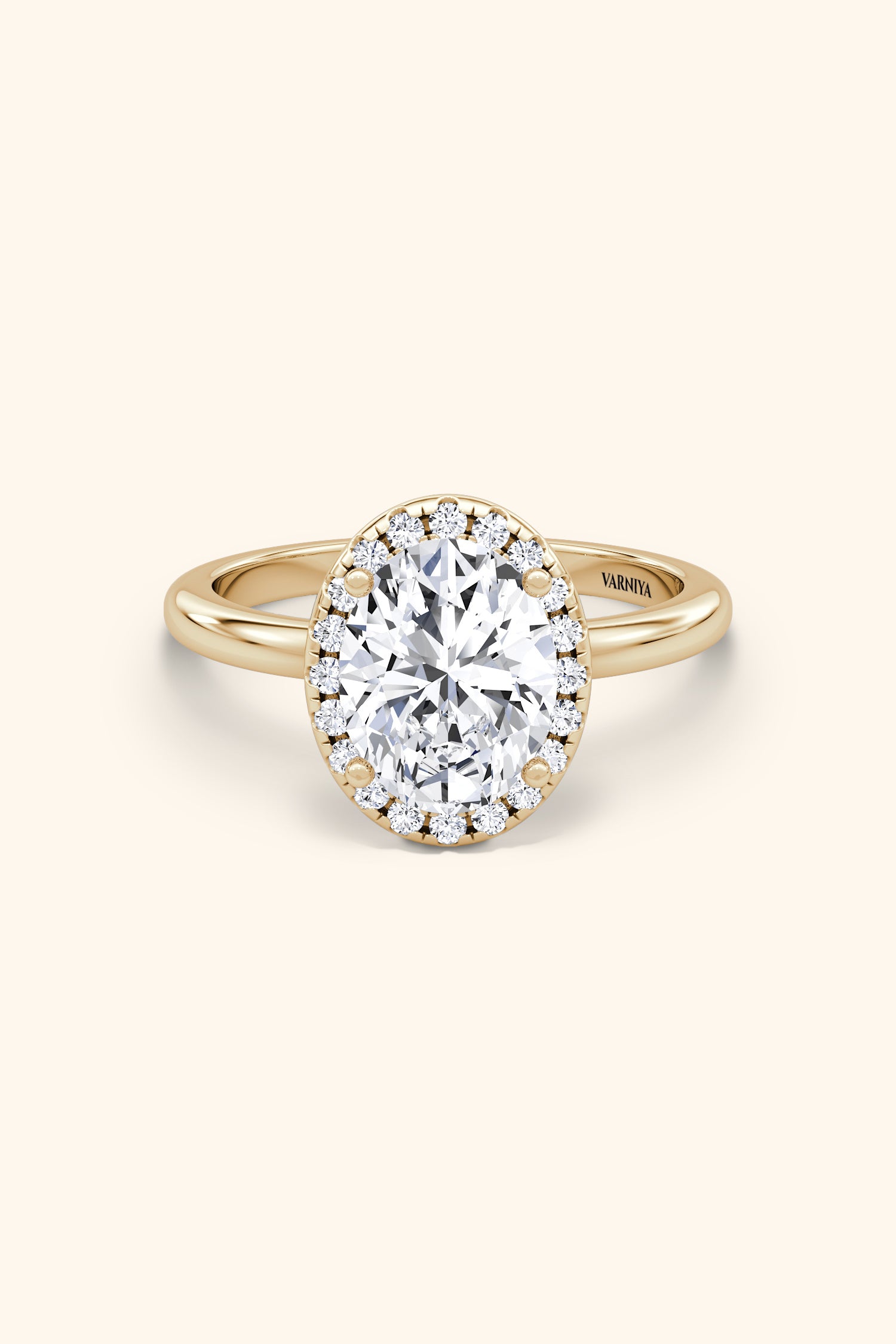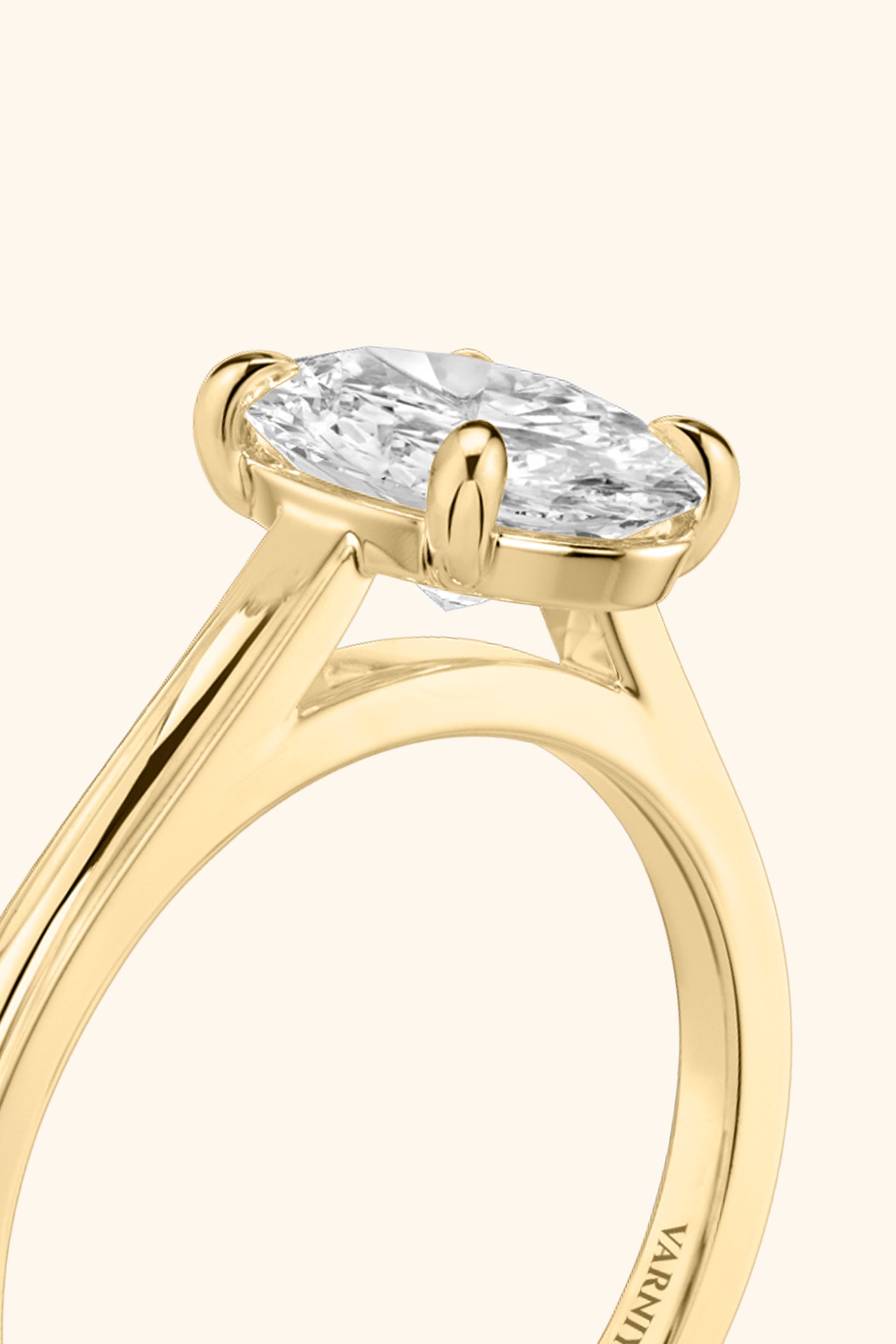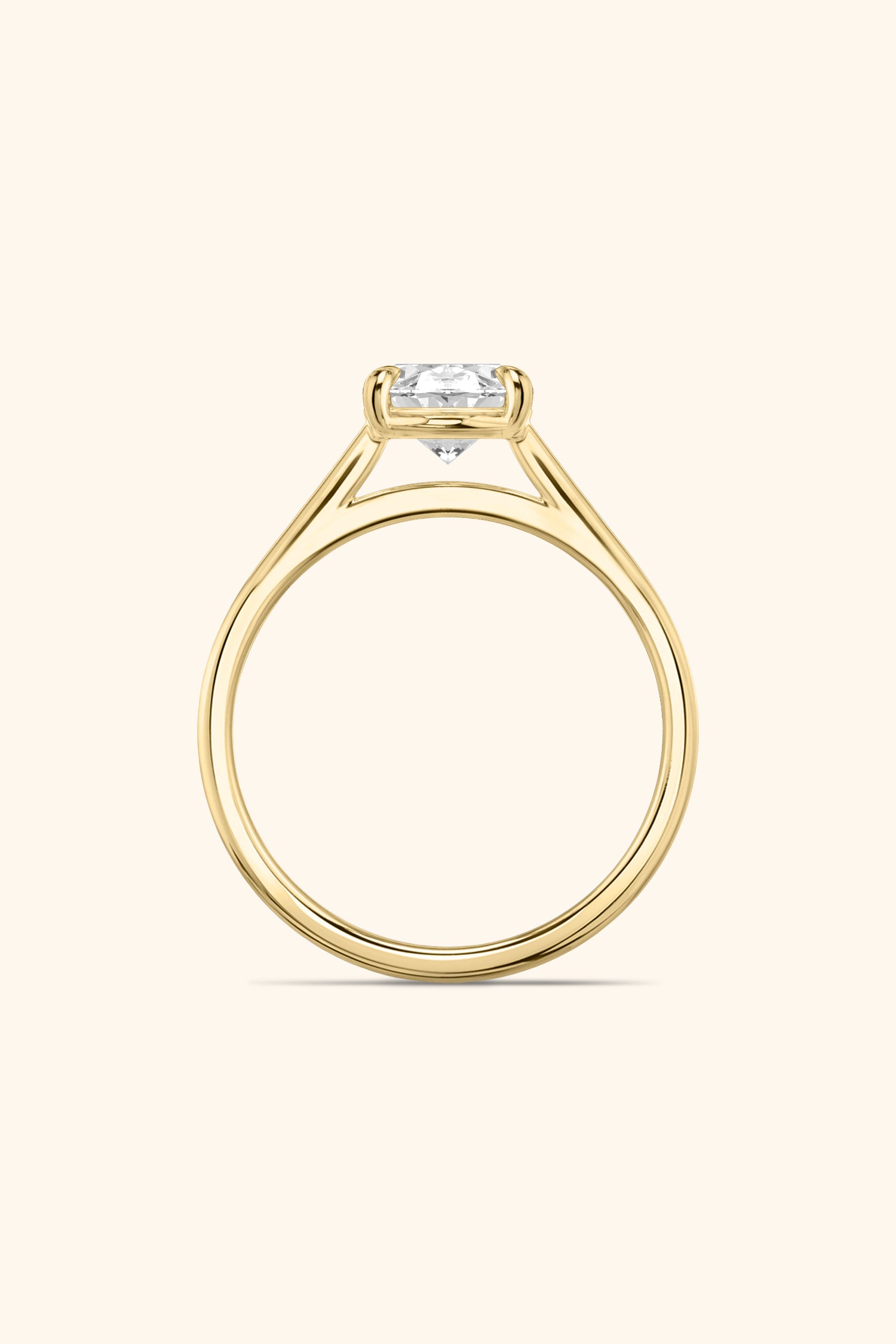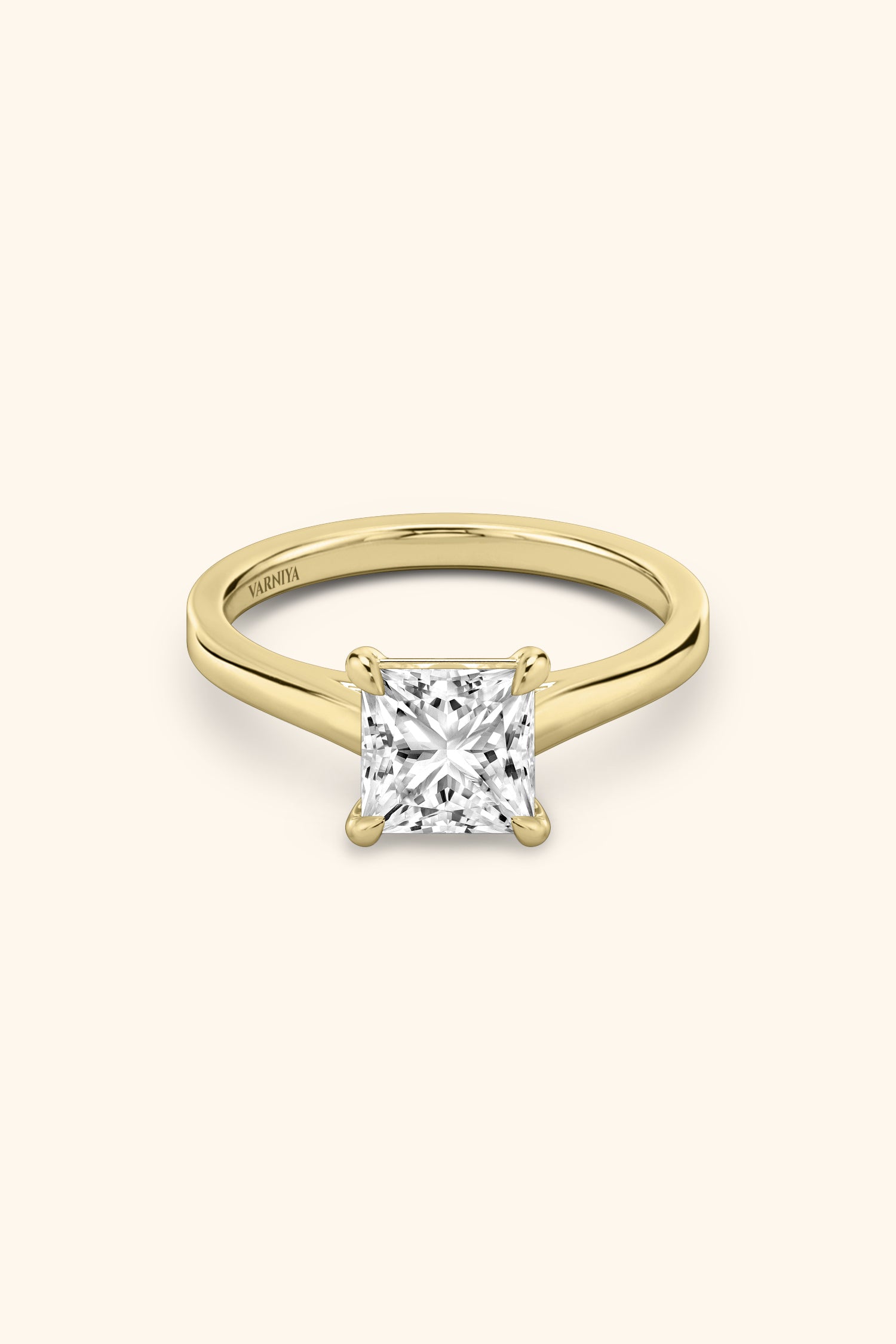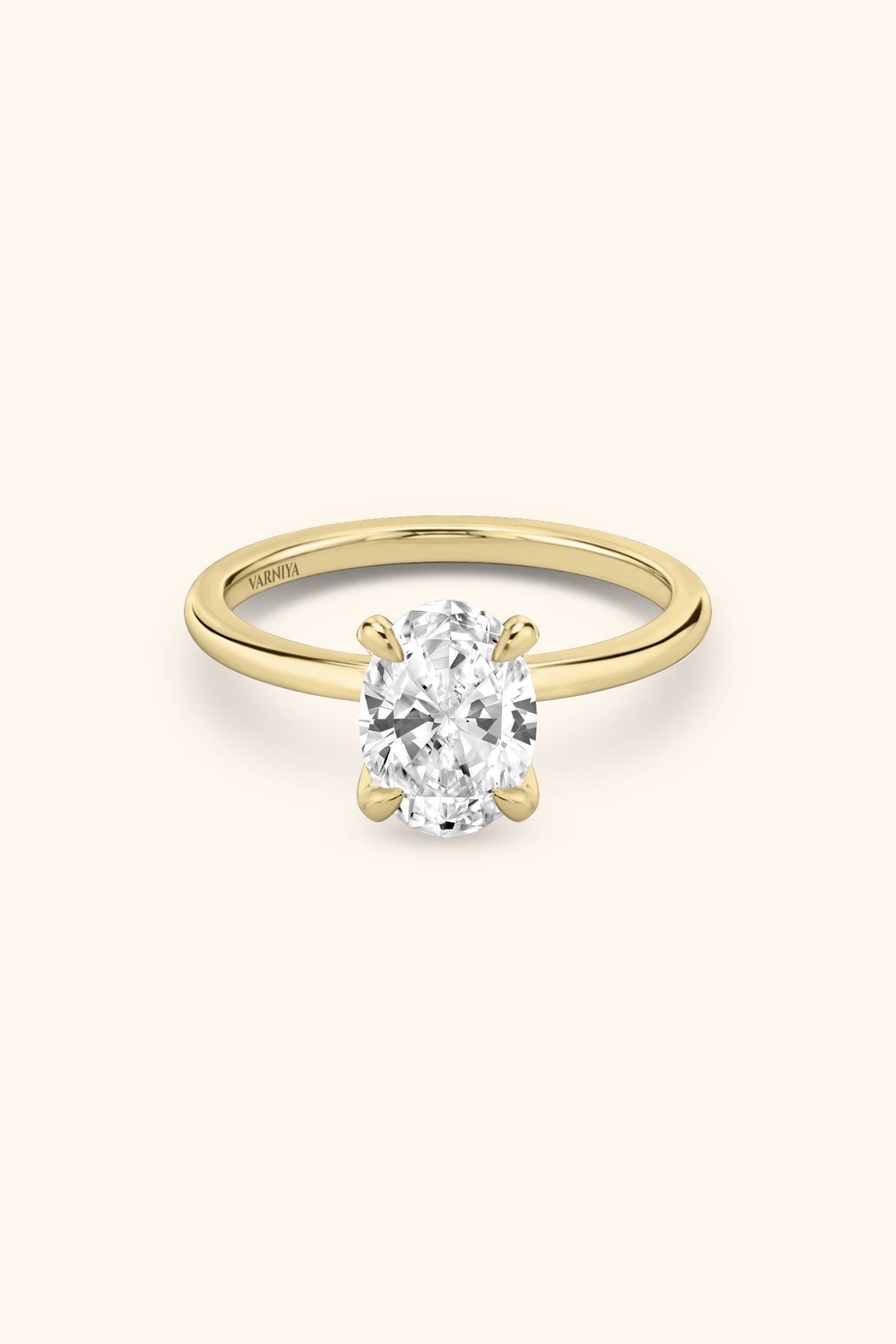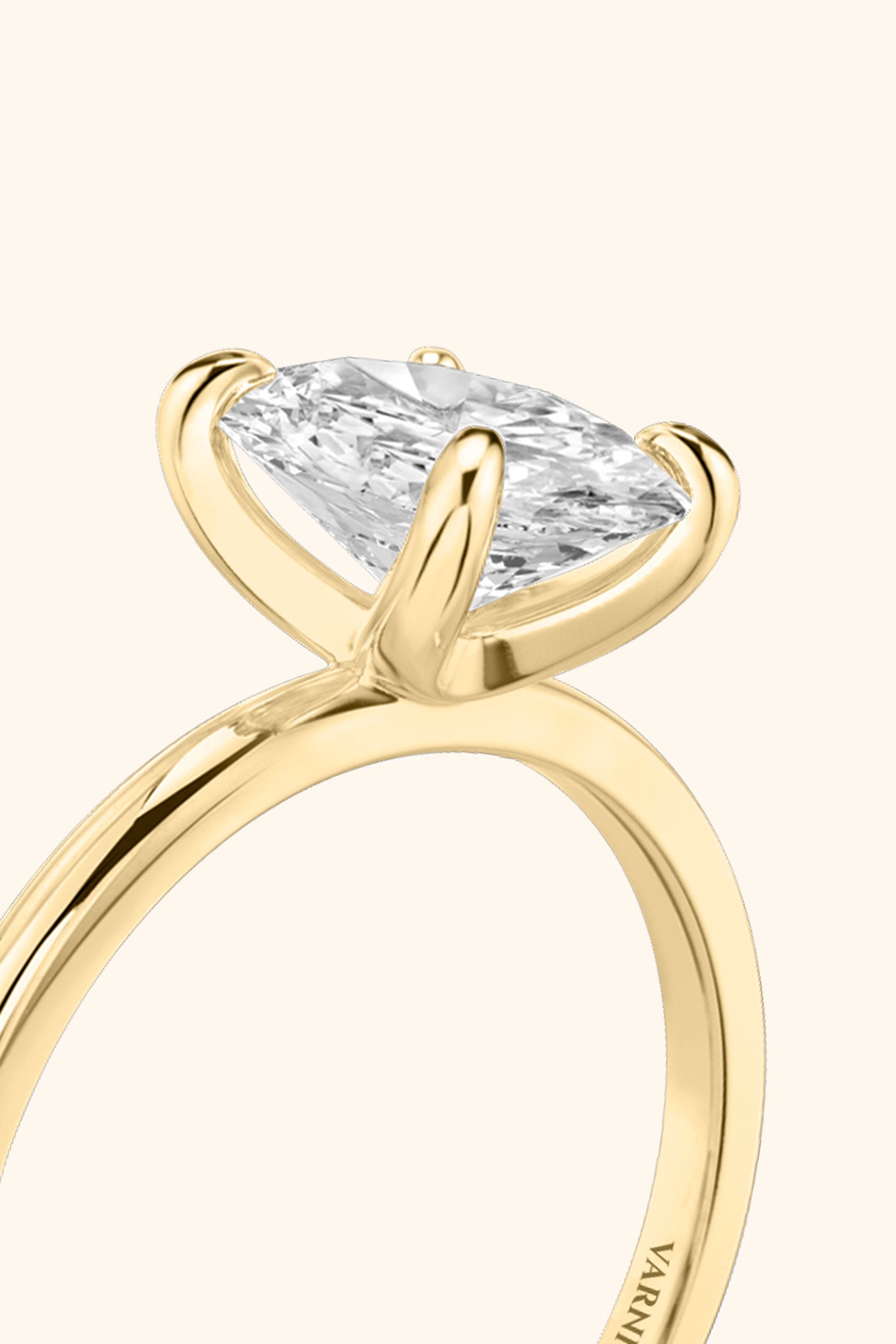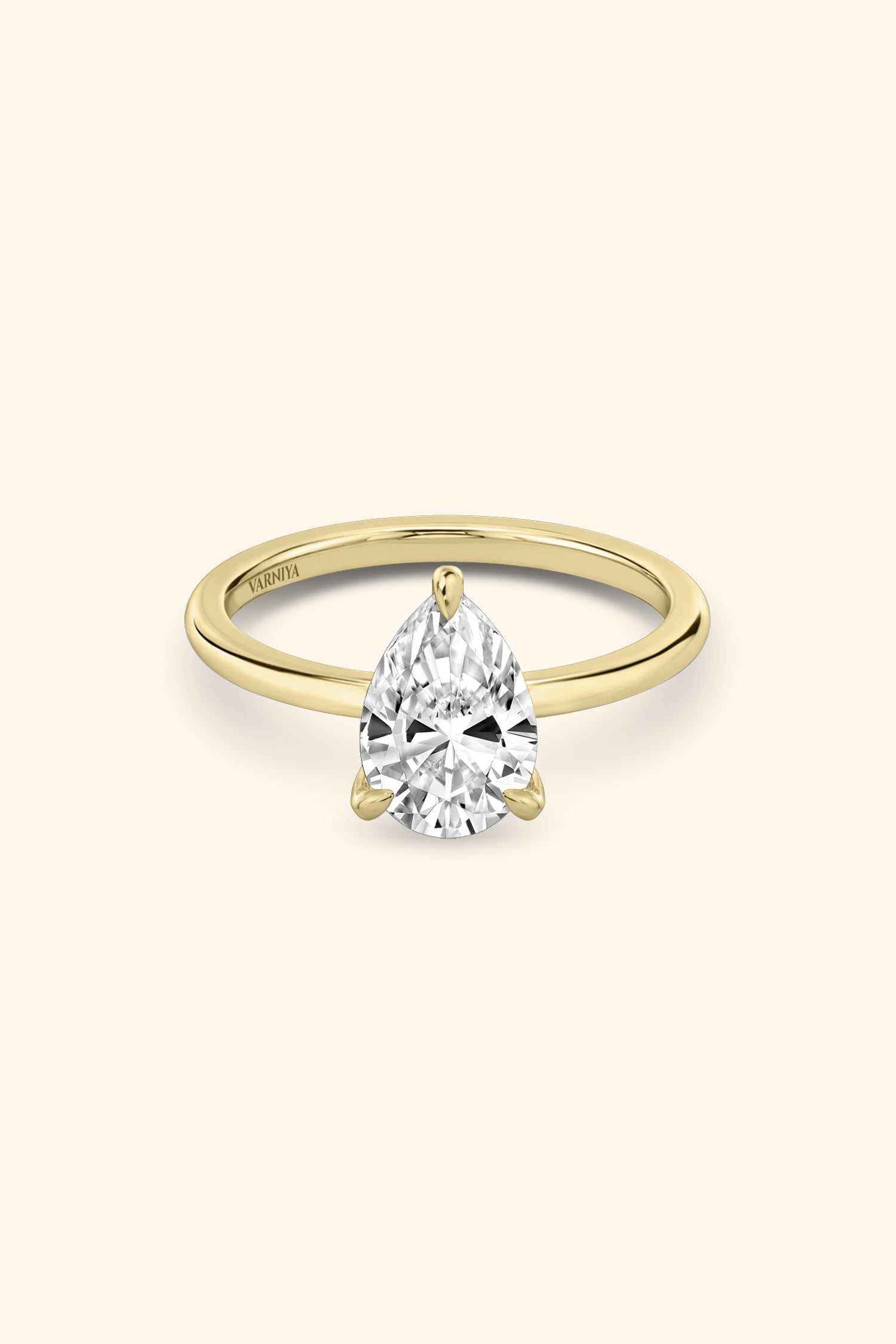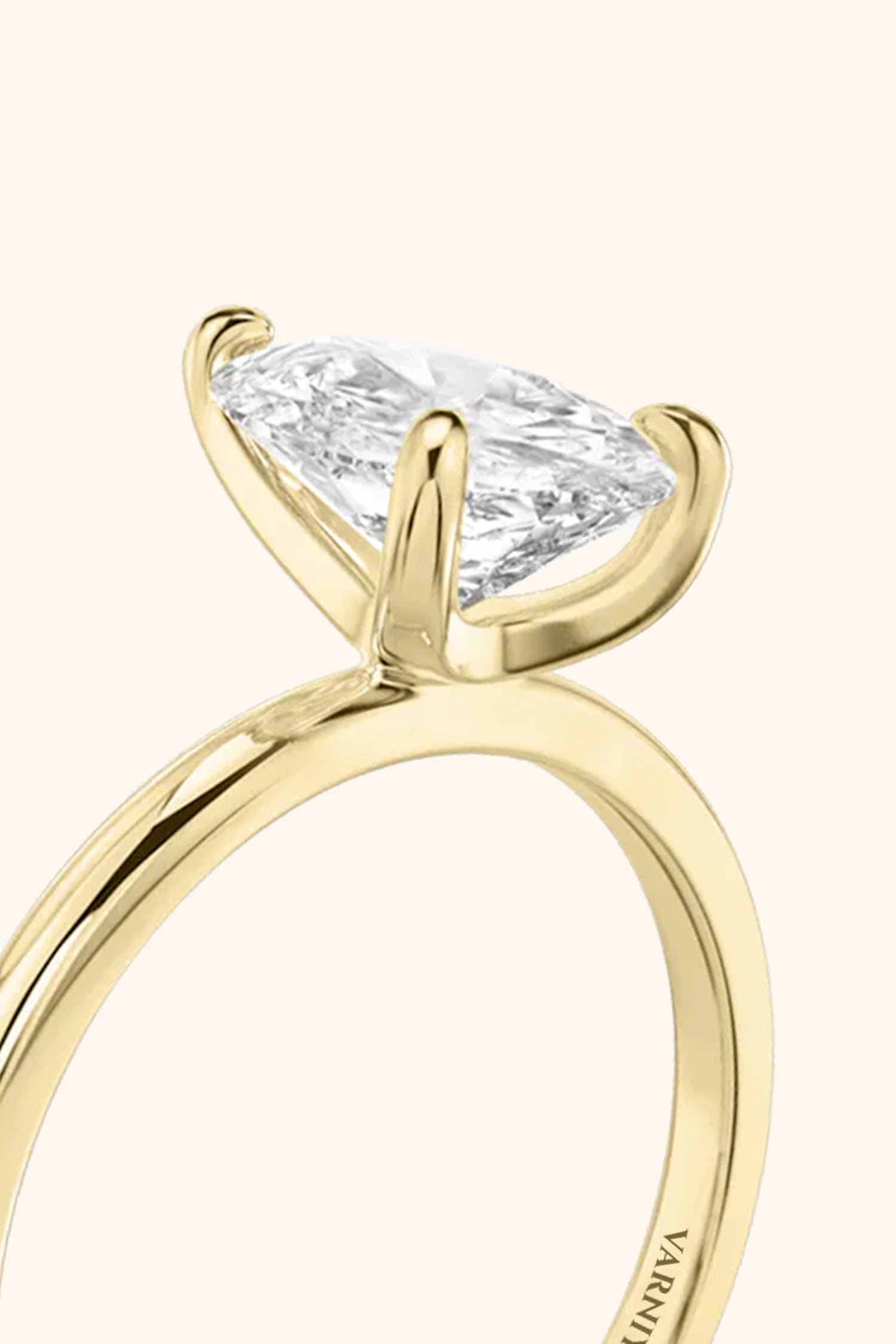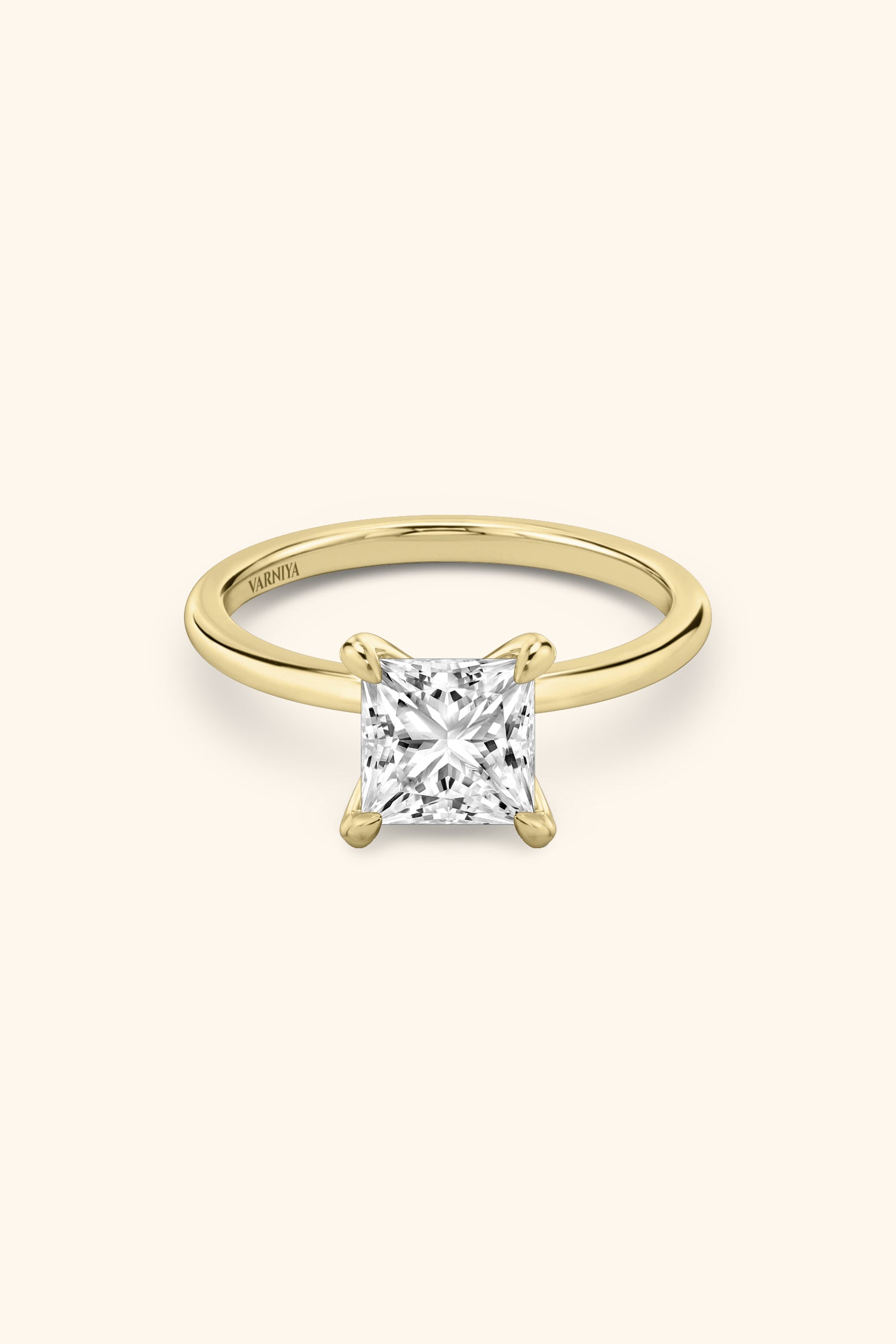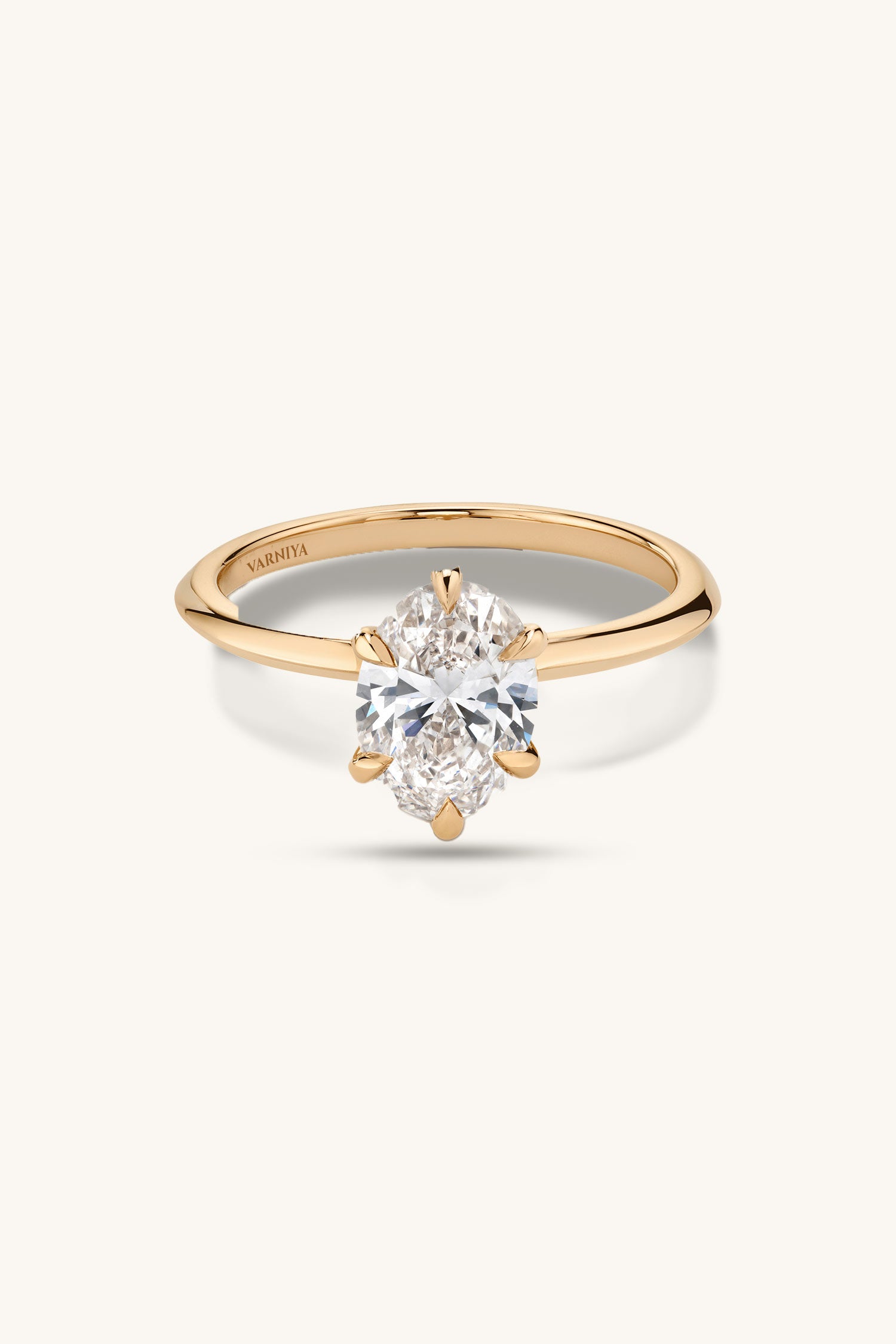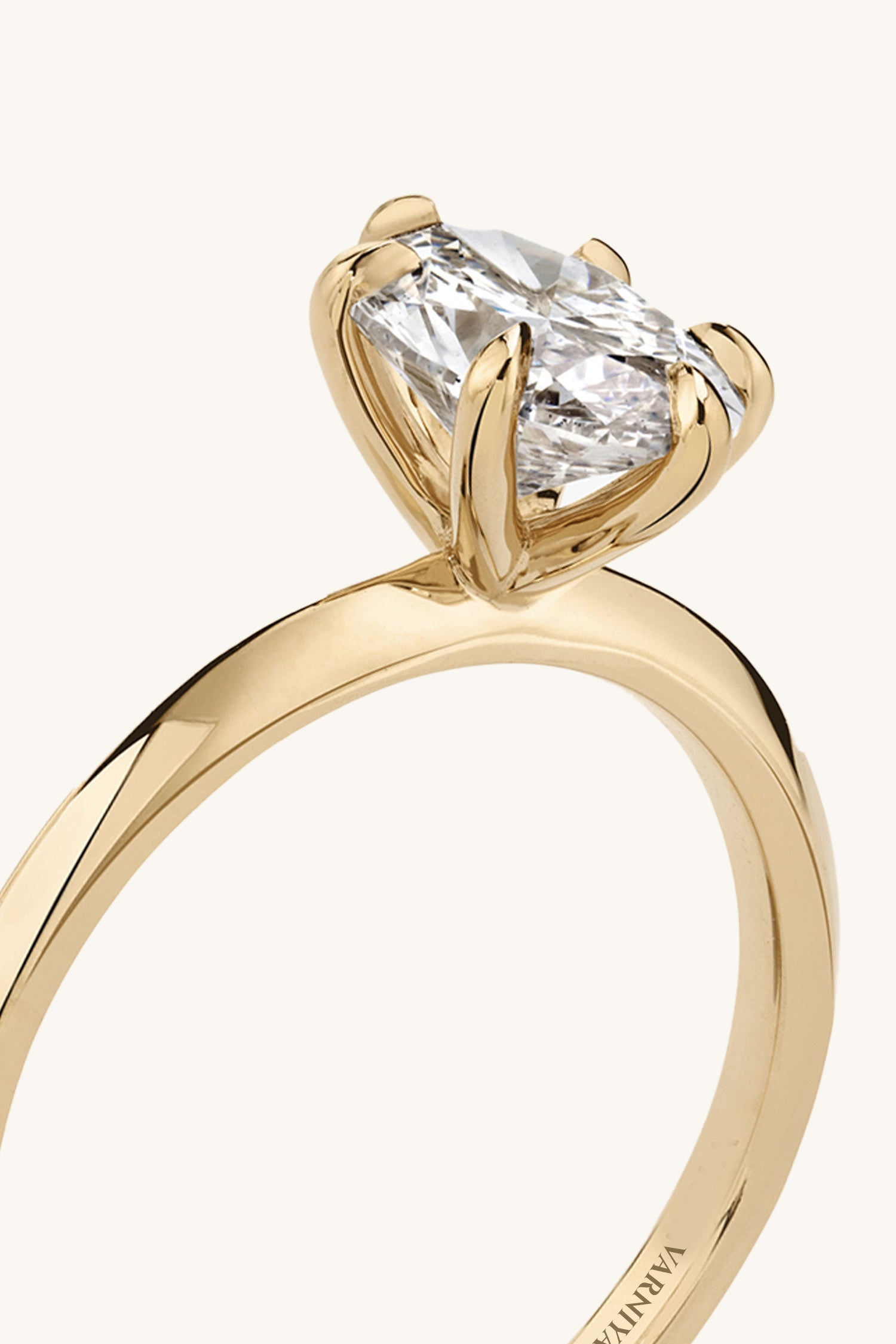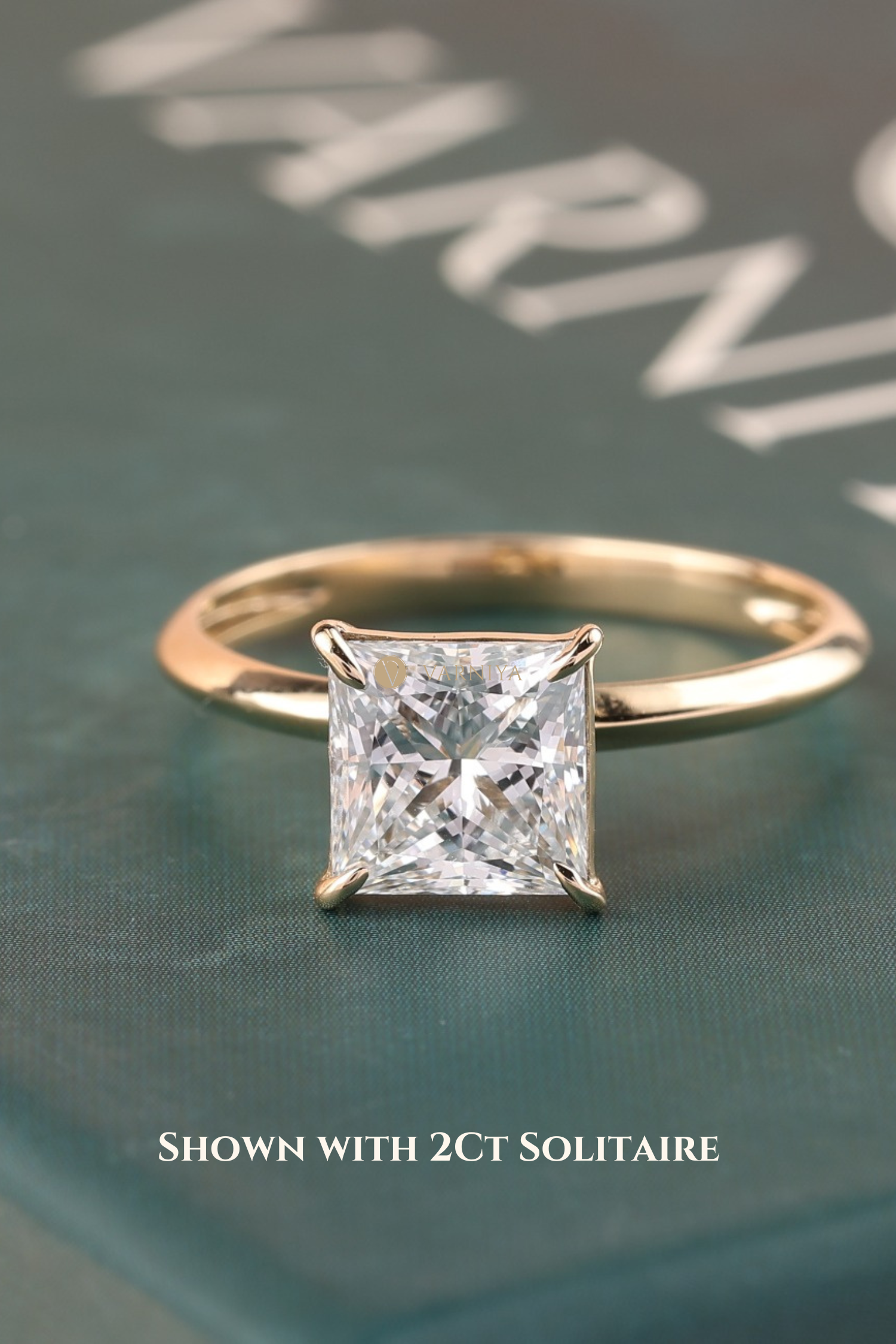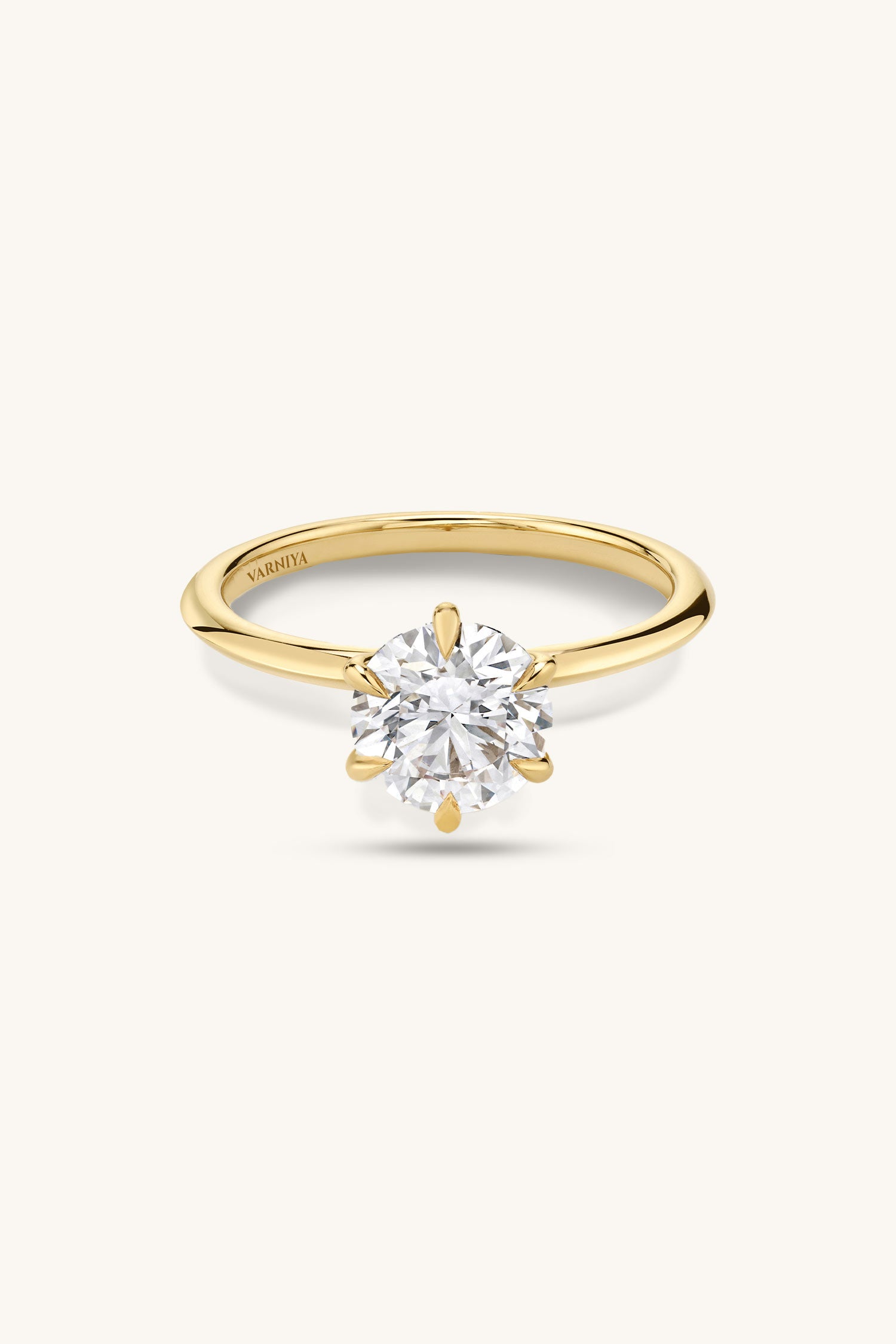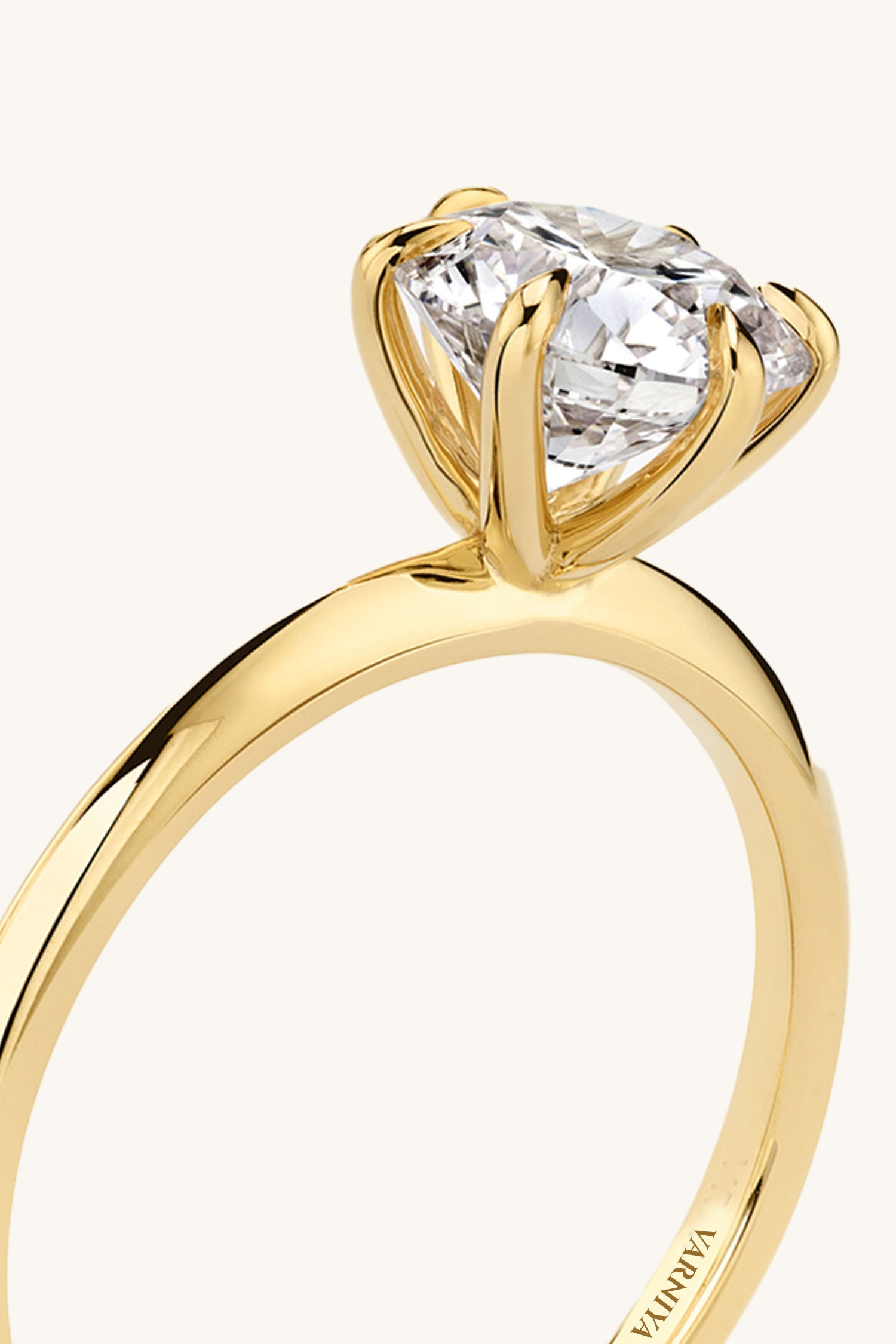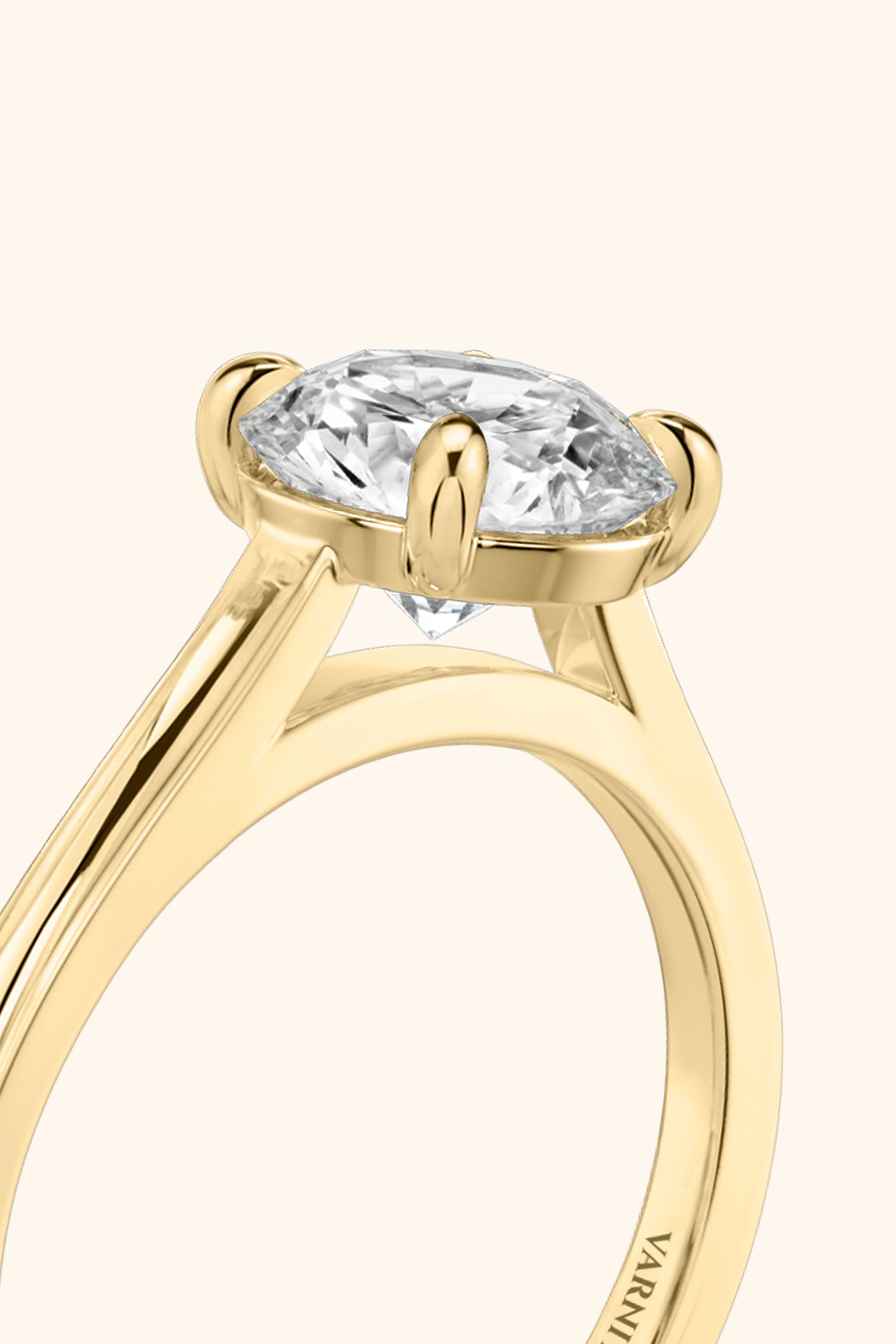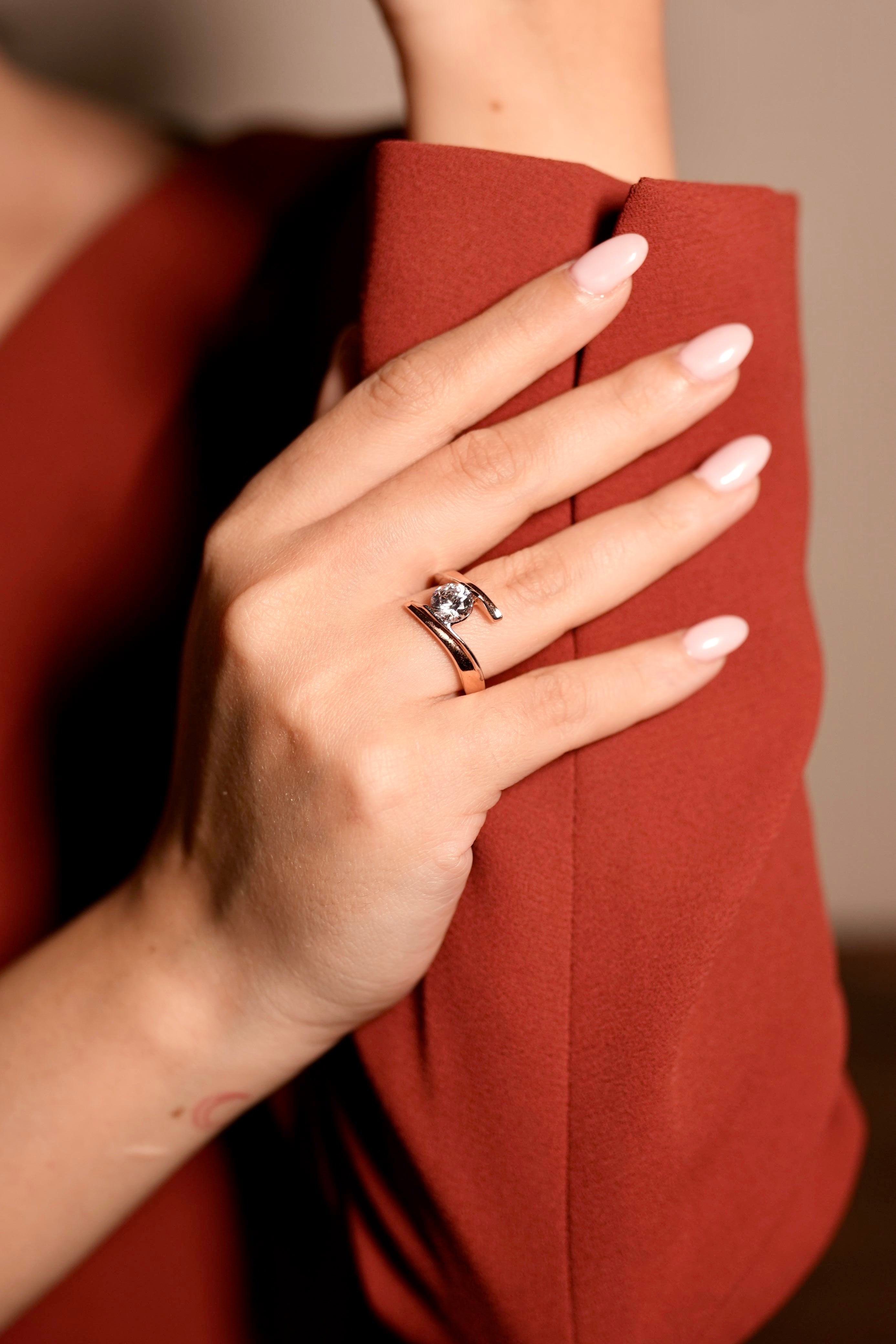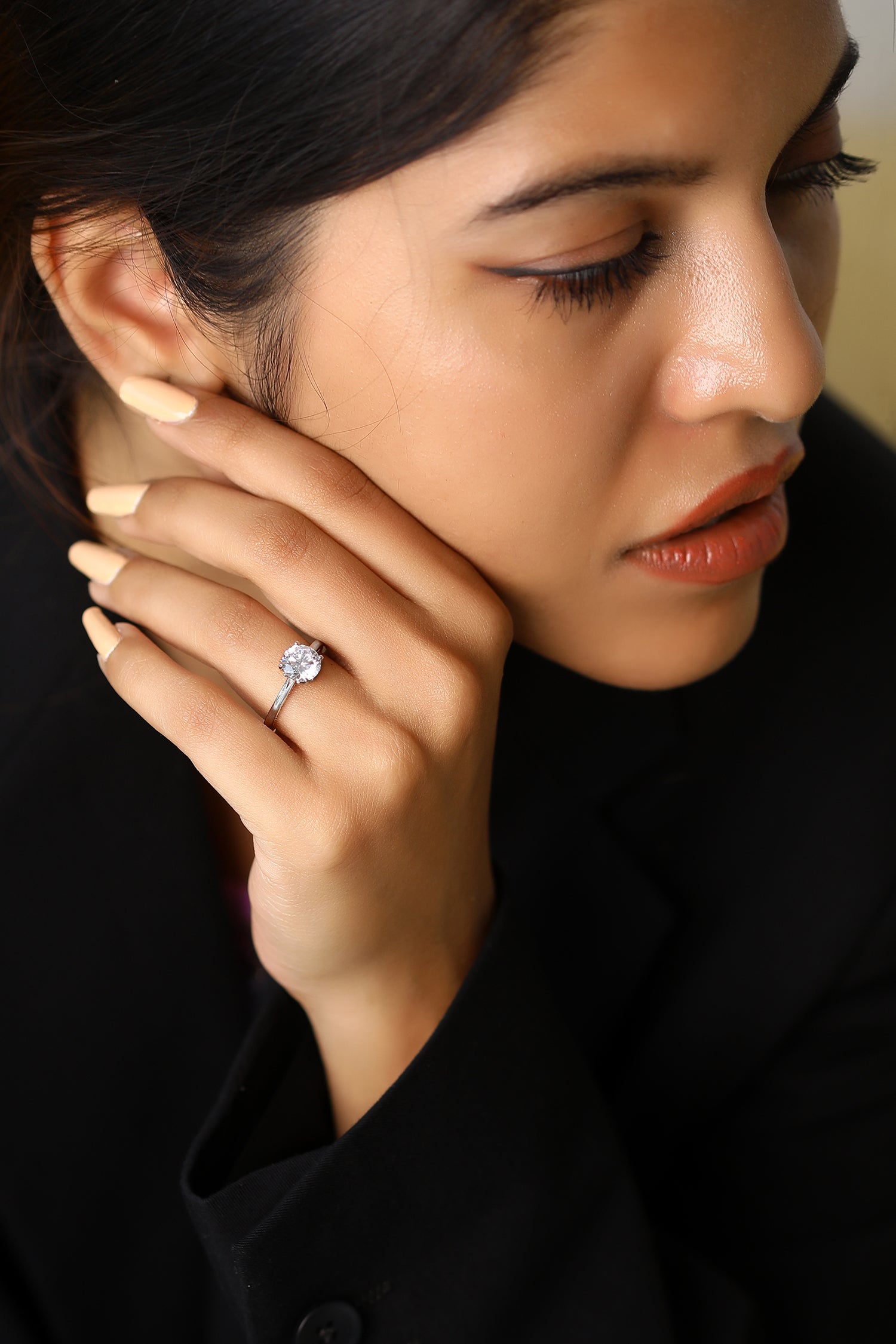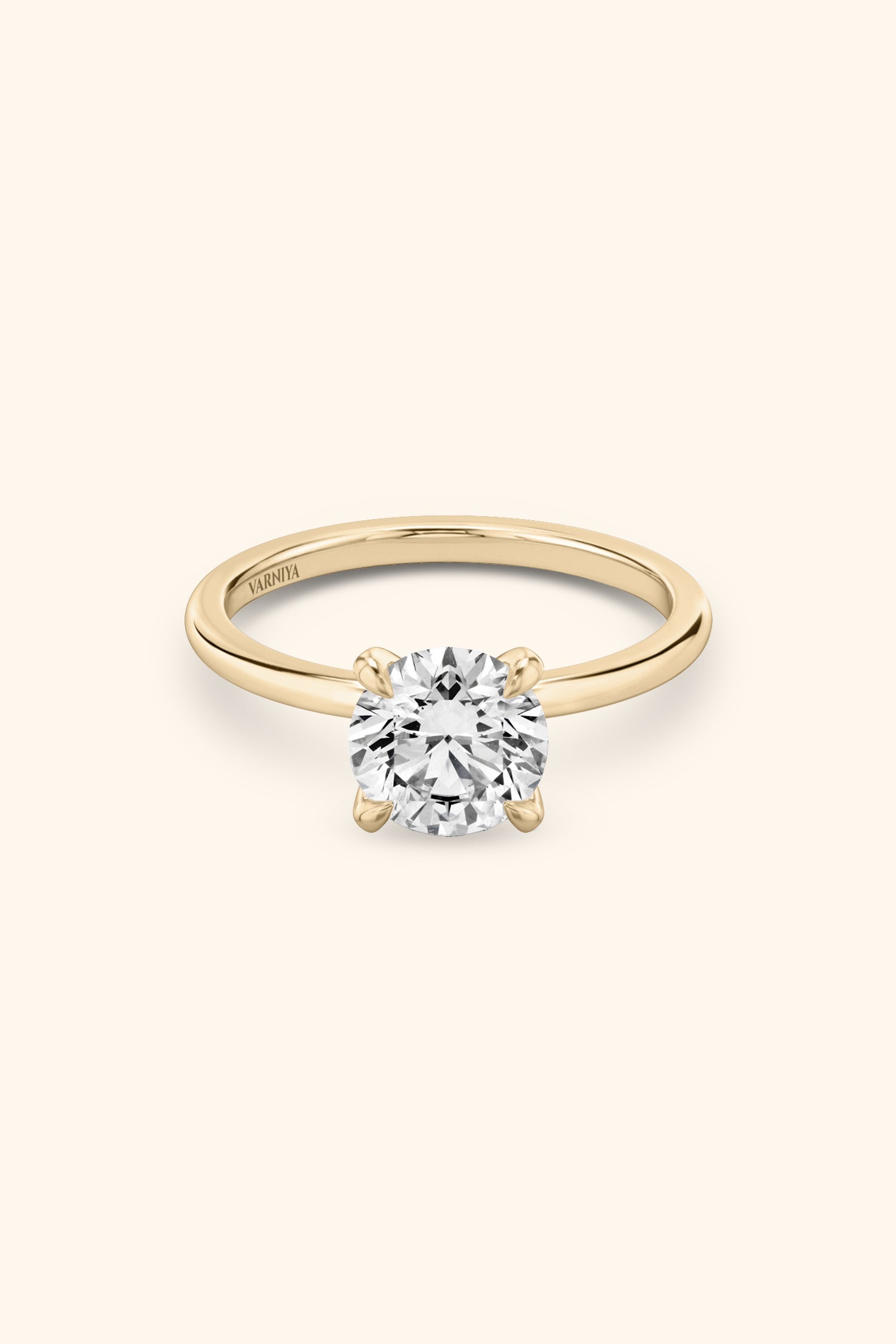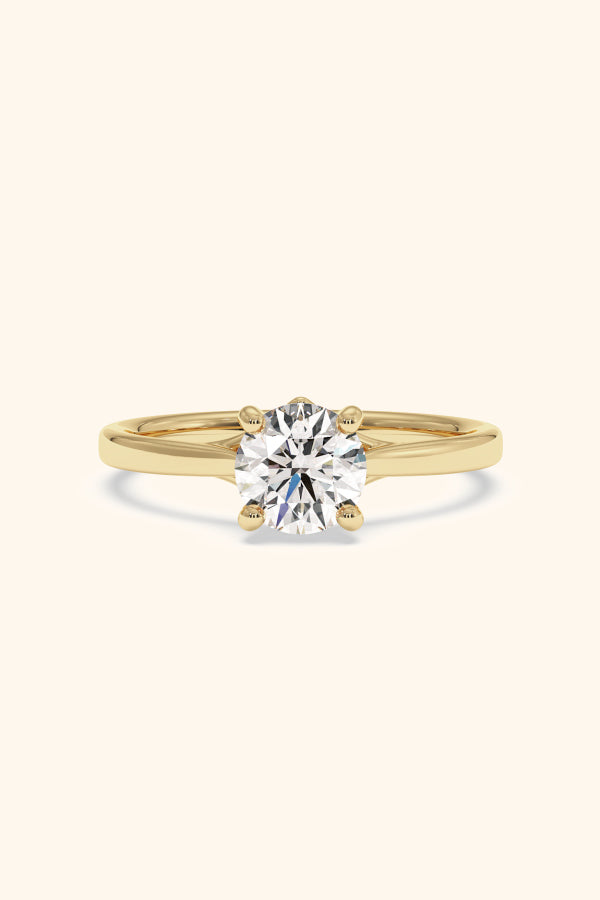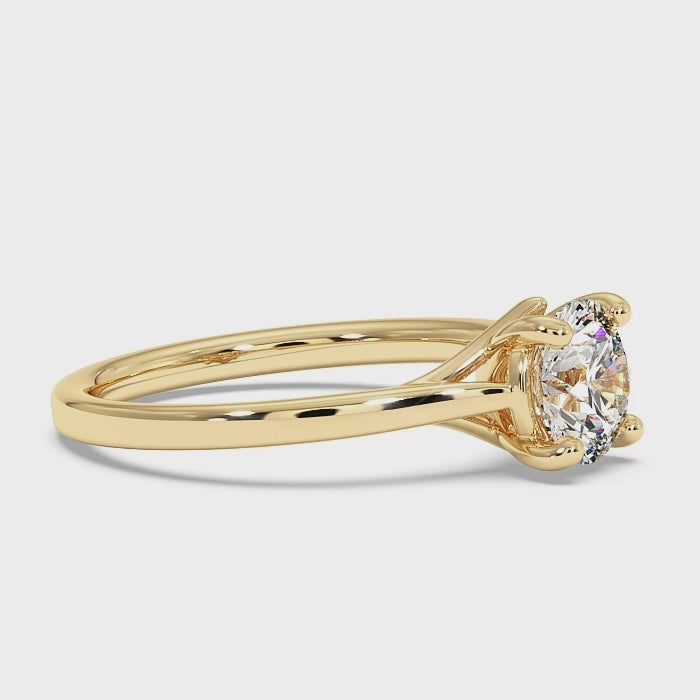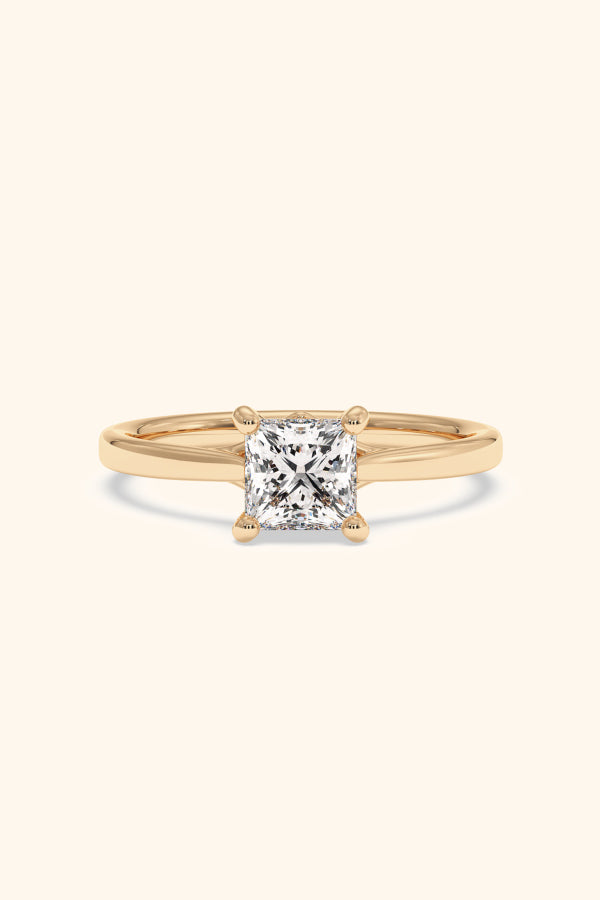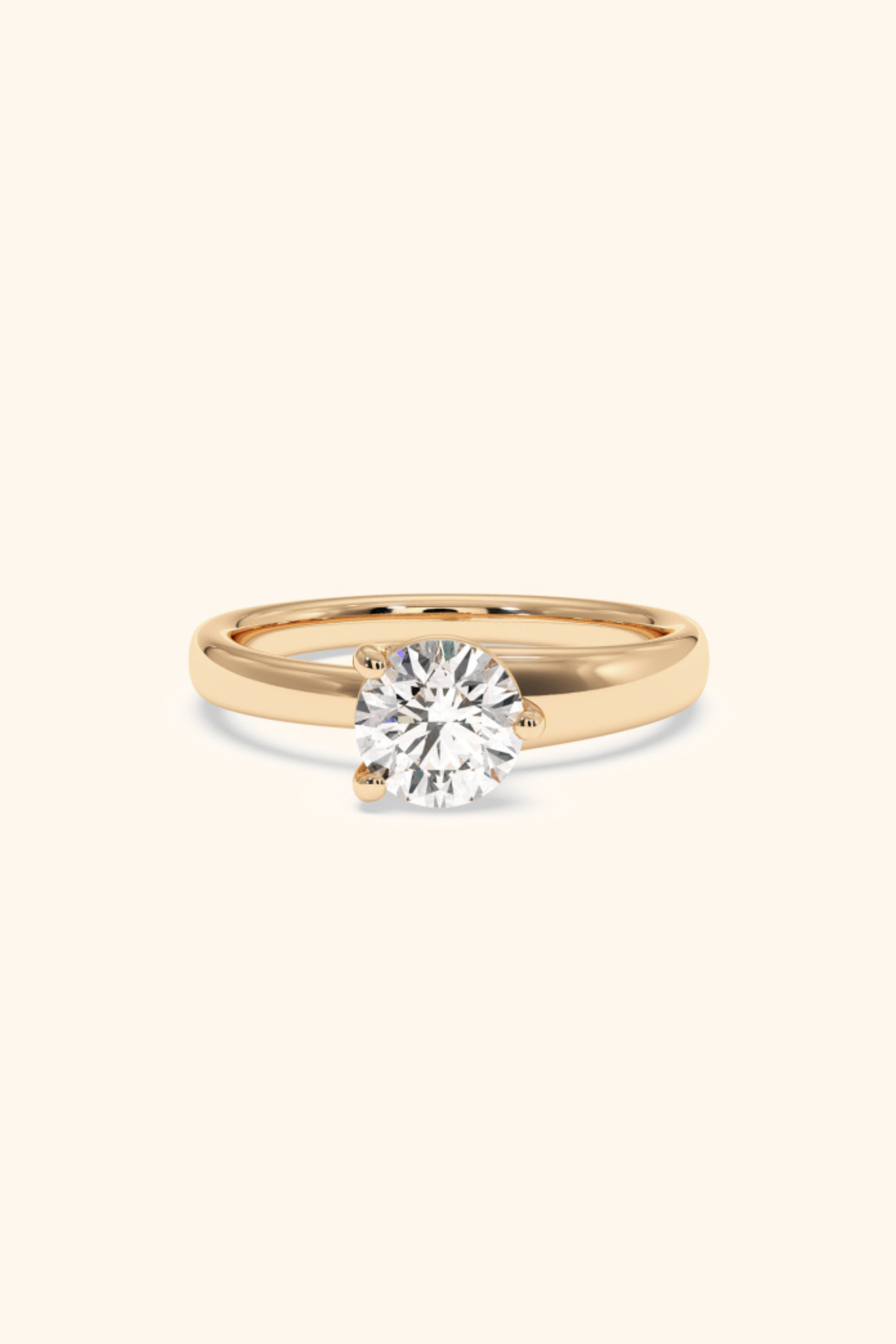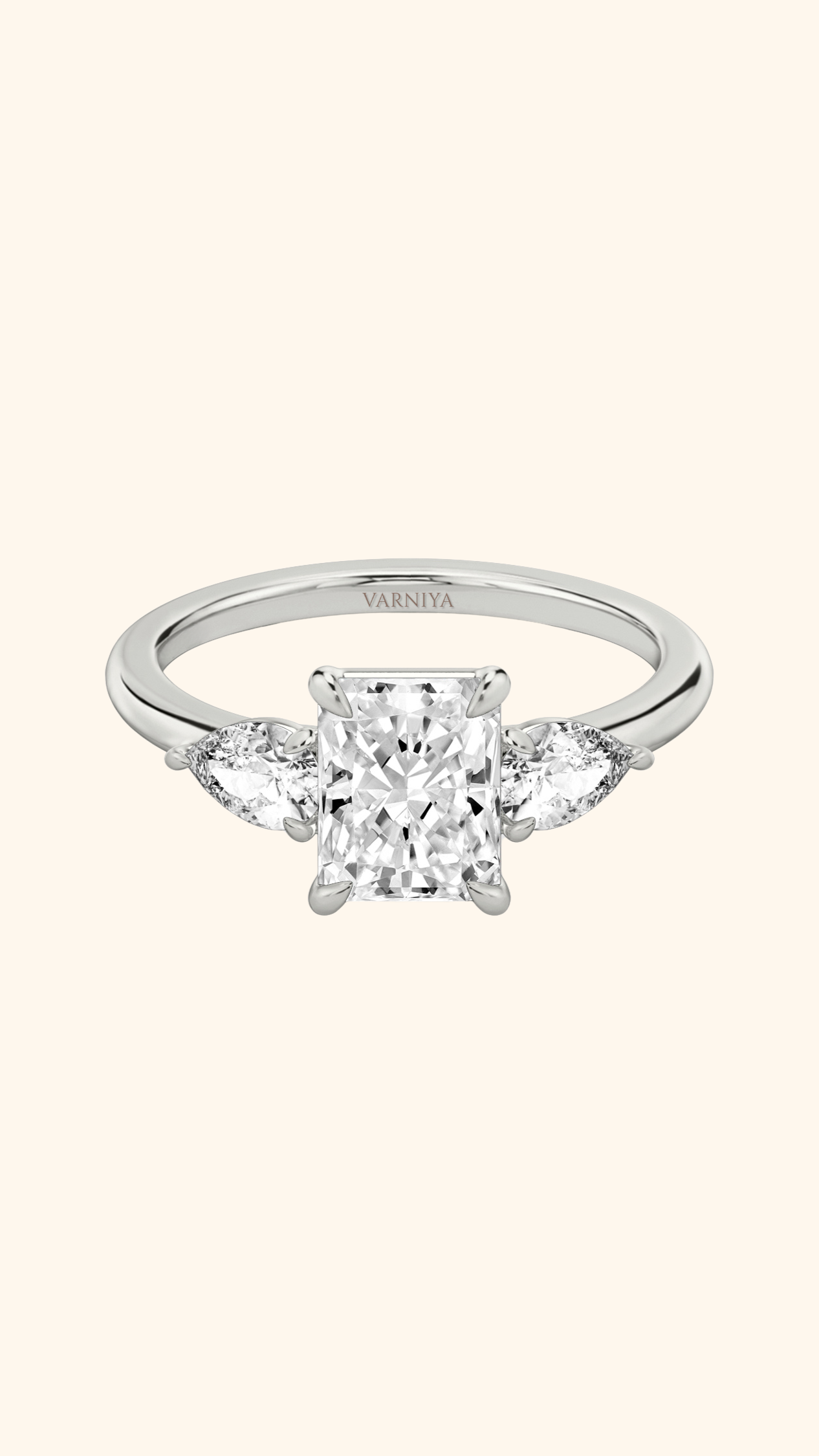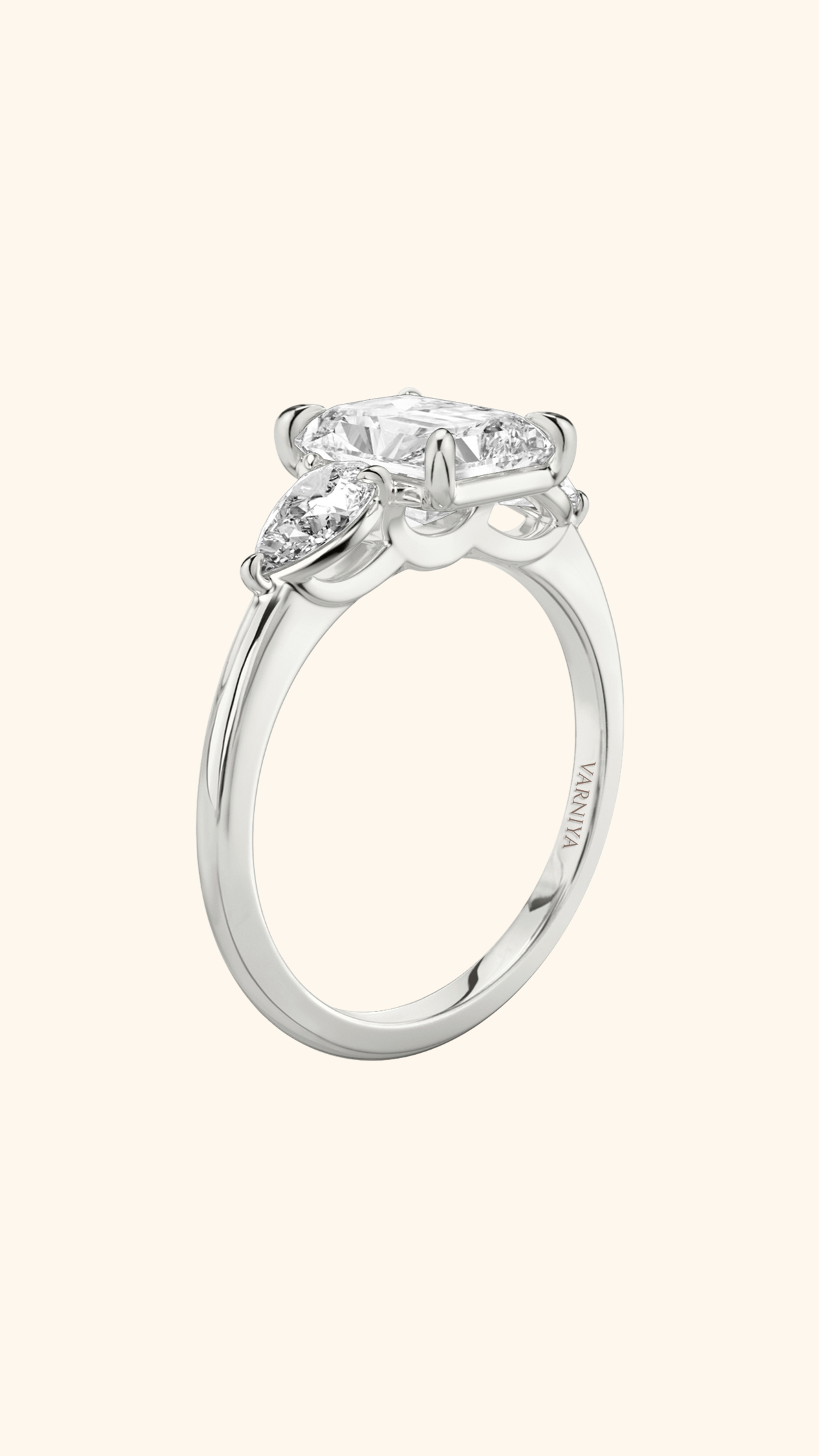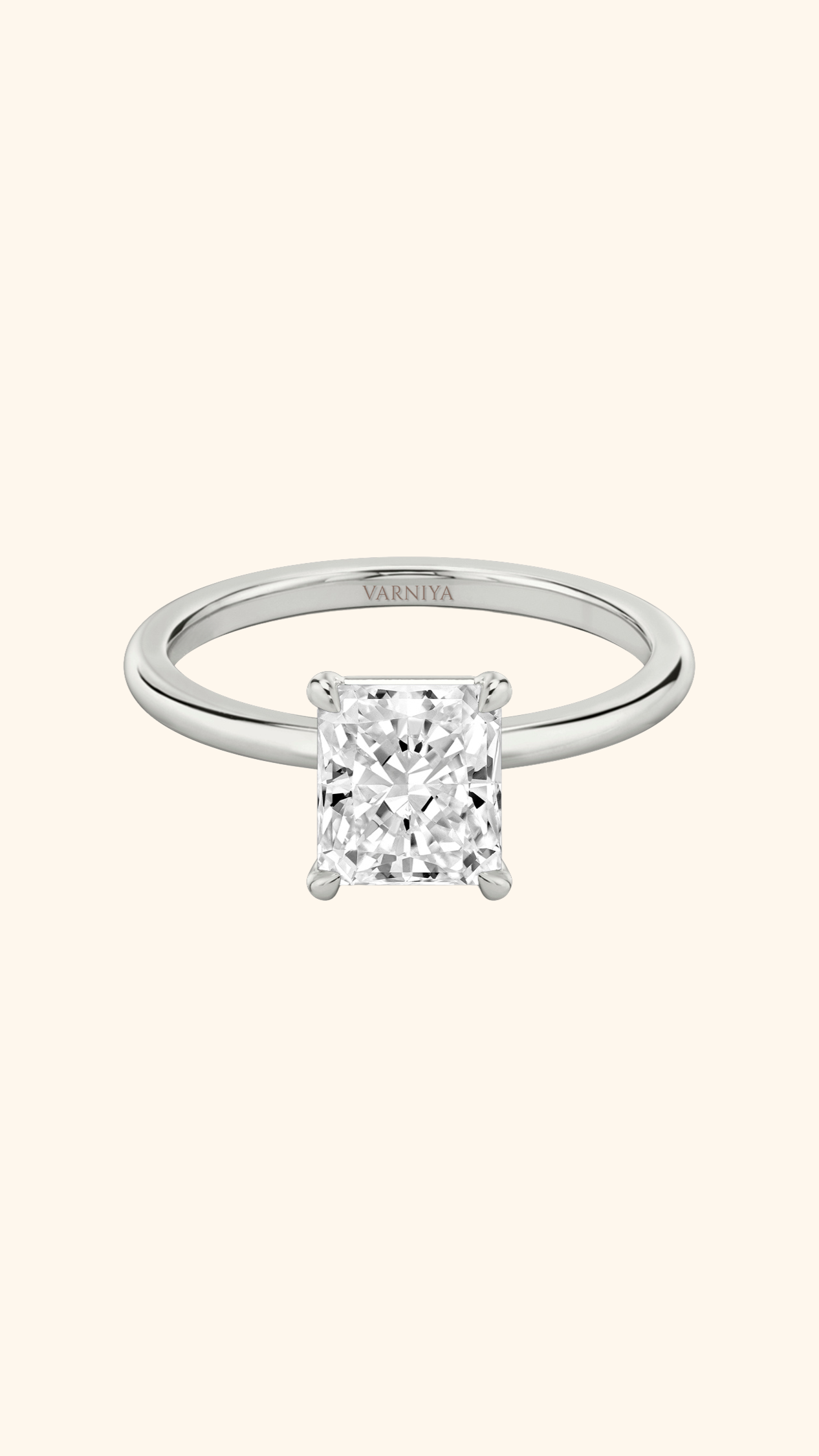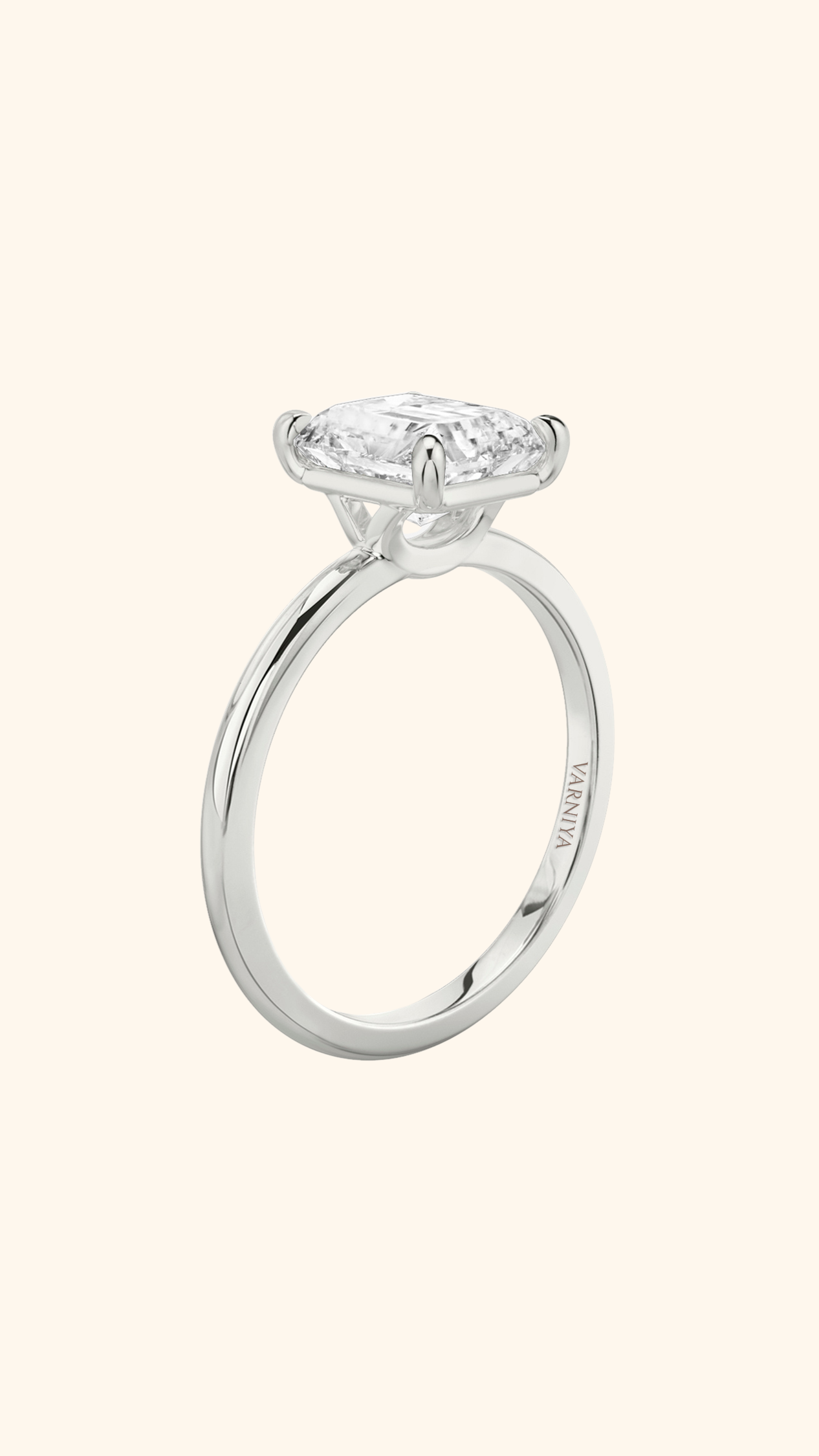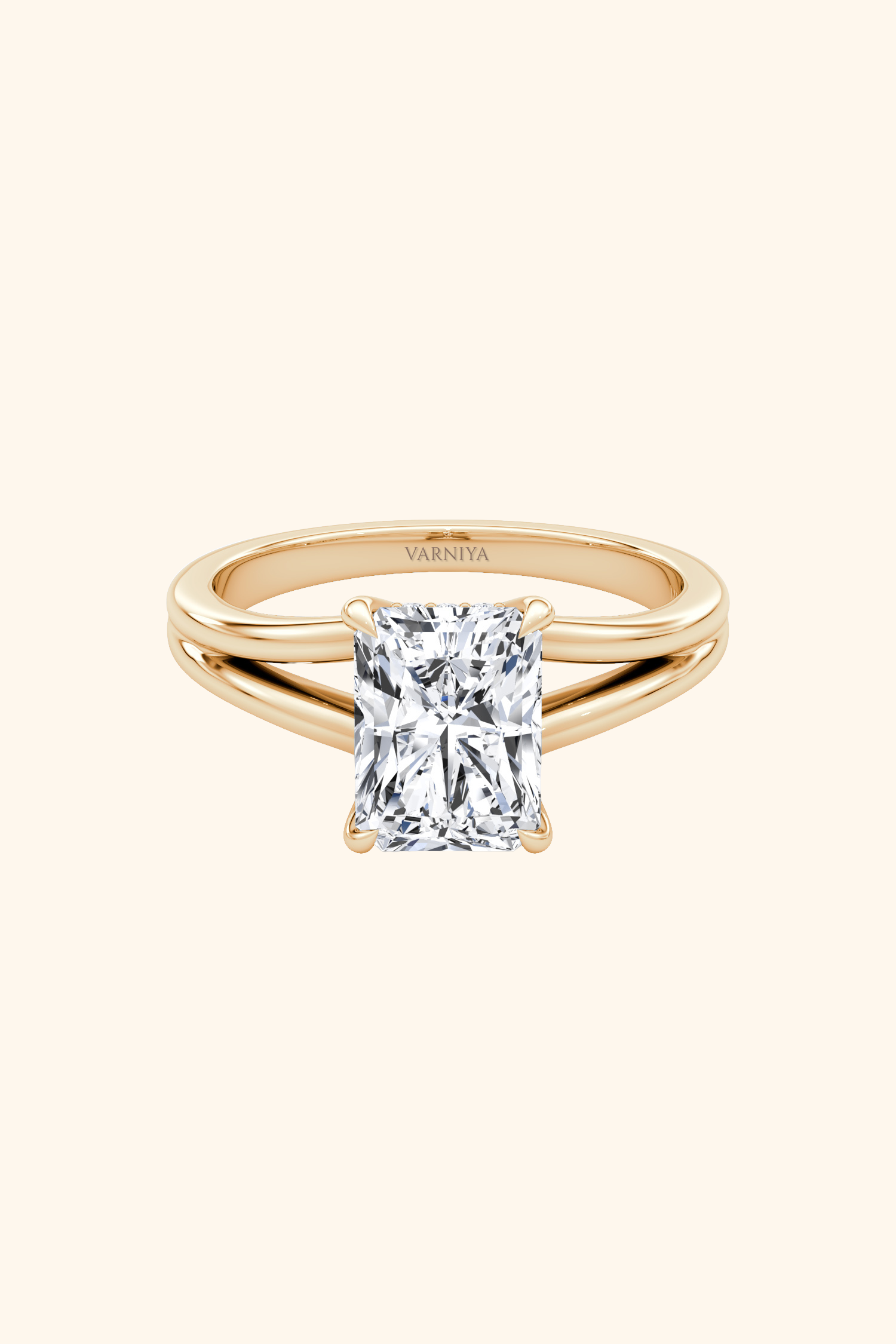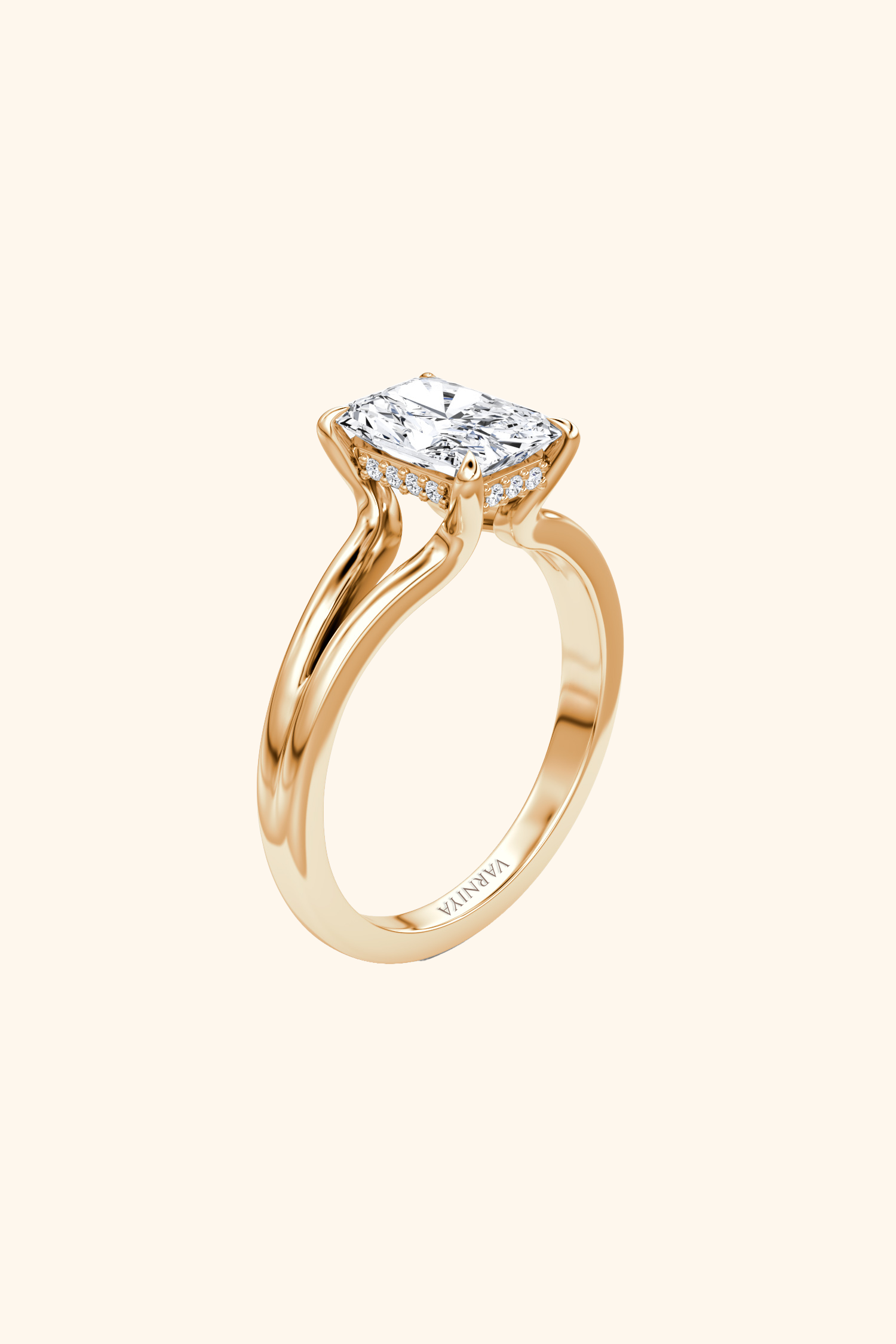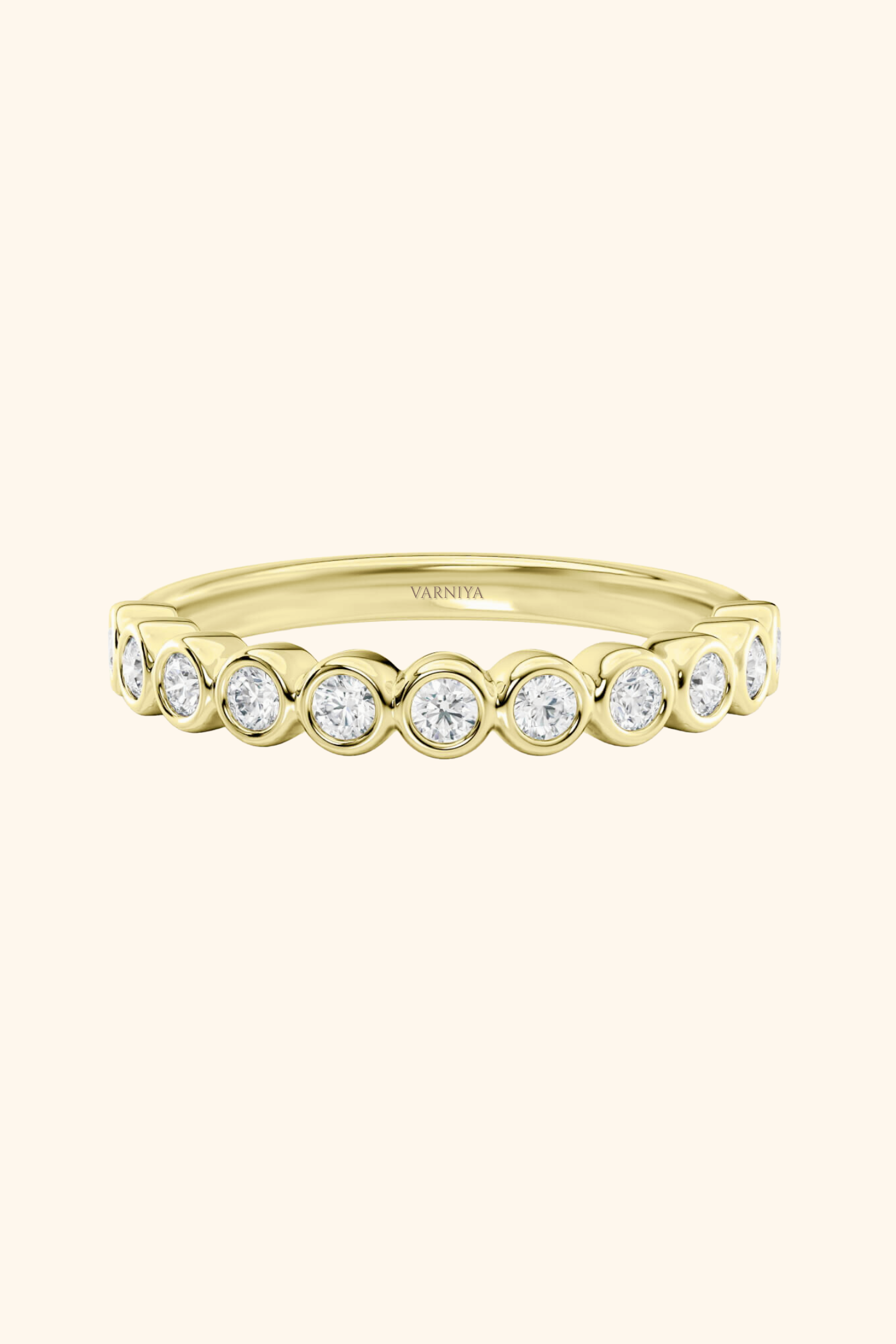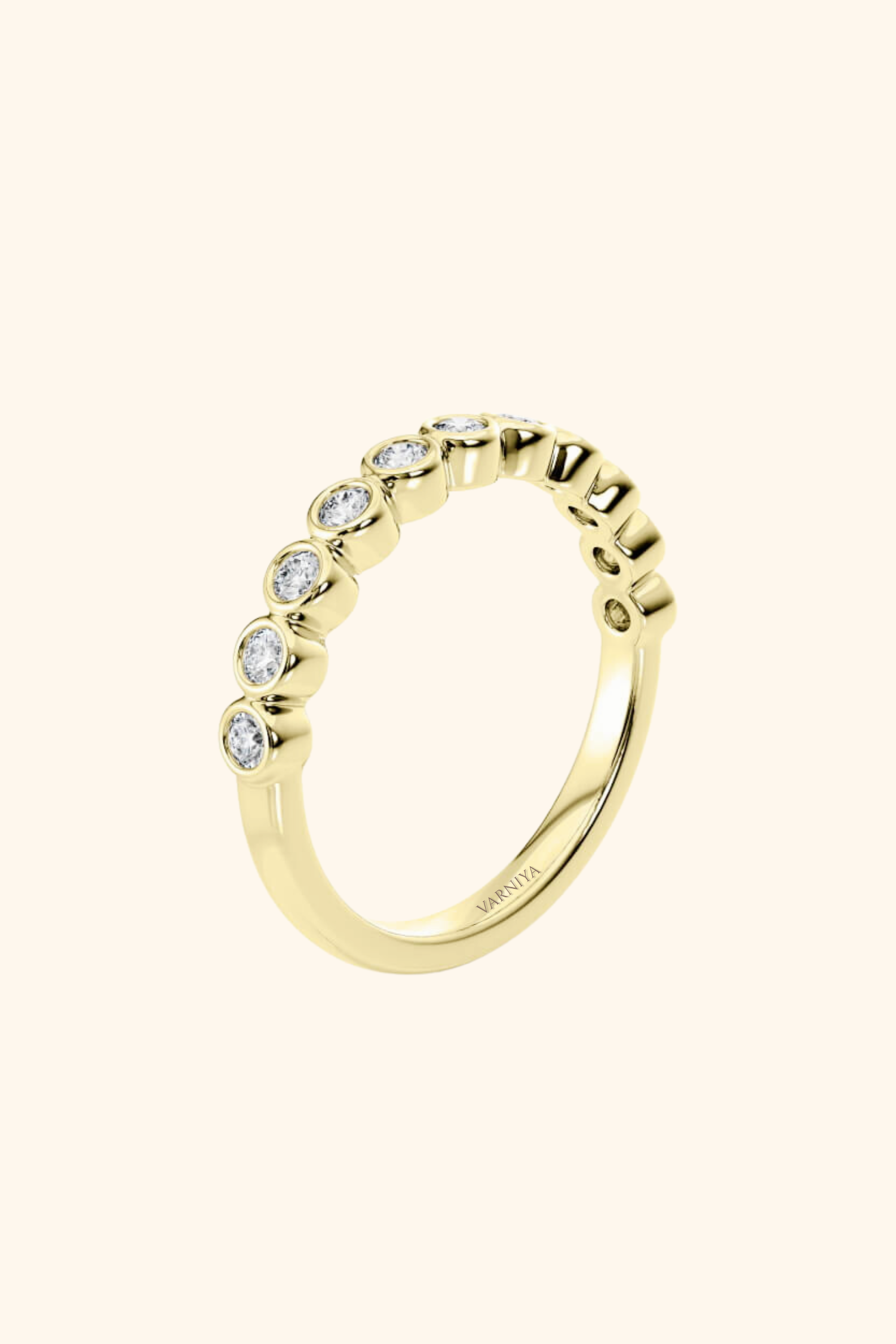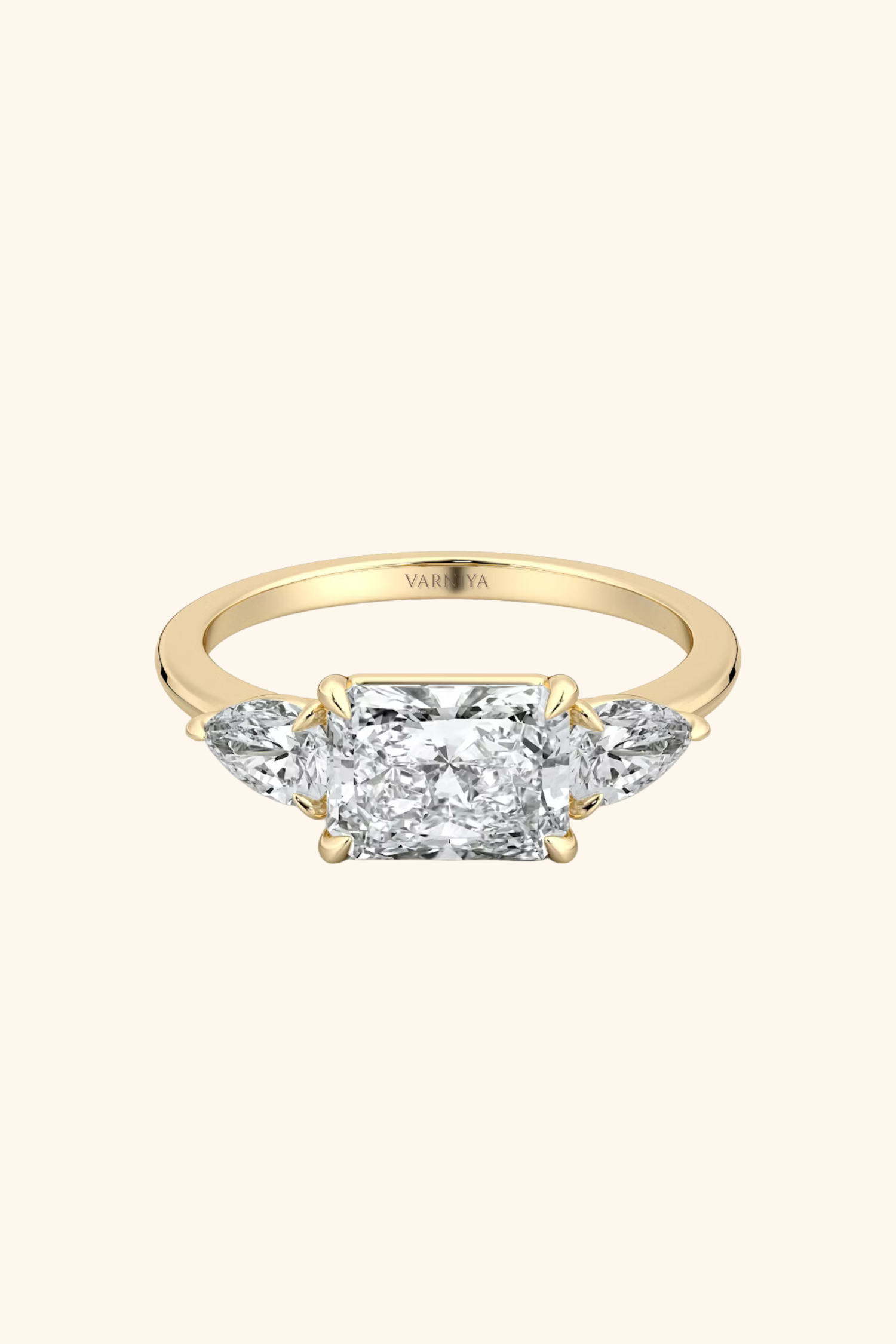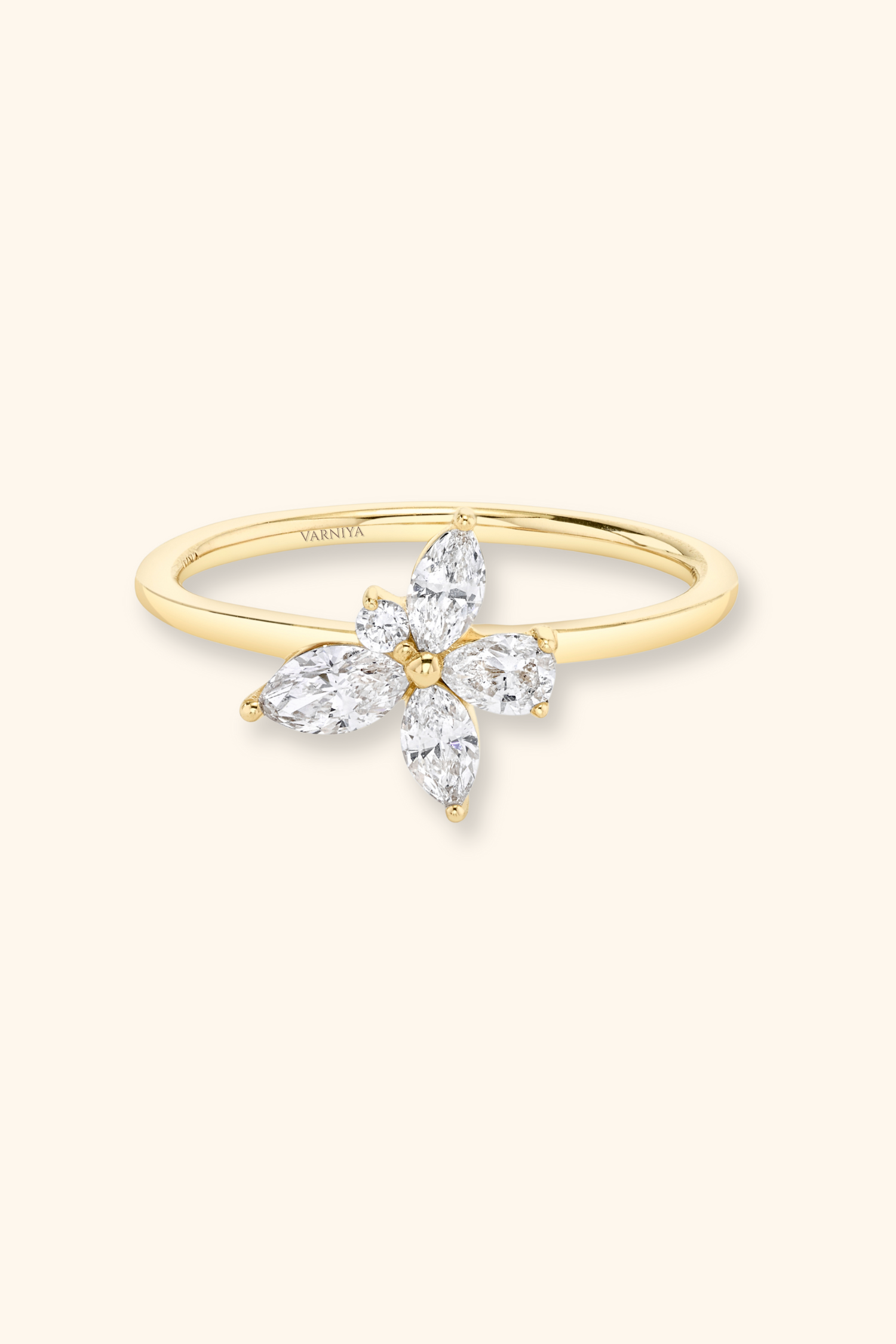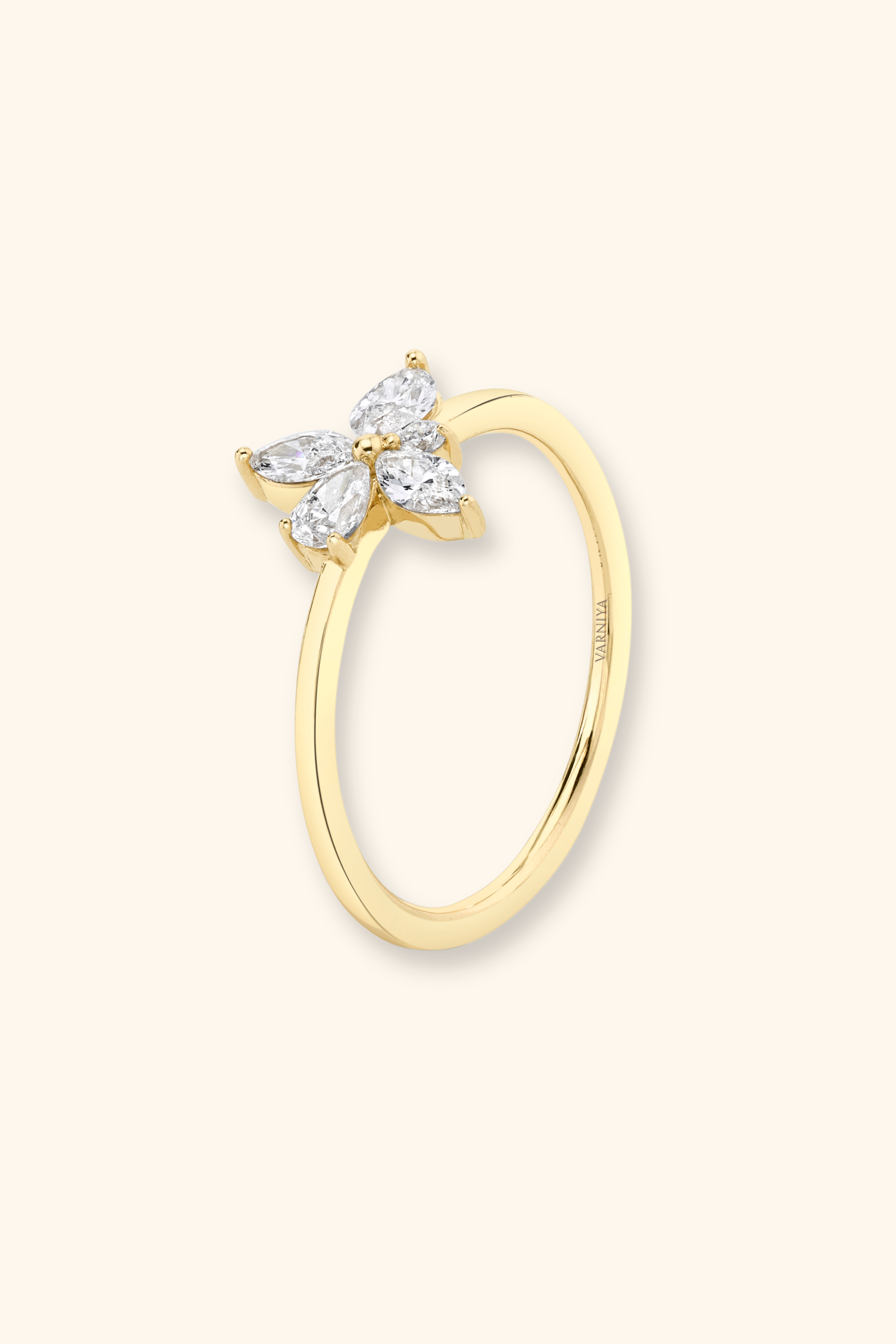From Lab to Love: Why Couples Choose Lab‑Grown Diamond Rings in 2025
Lab grown diamond rings are trending! See why 2025 couples are ditching mined stones for something just as real—and way more affordable.
Thinking of buying a diamond ring but don’t want to blow your life savings or dig up half the earth? You’re not alone. In 2025, lab grown diamond rings are booming—and for good reason.
According to Statista, over 40% of millennial and Gen Z couples now choose lab created diamonds over mined ones. Why? They're real, stunning, ethical, and yes—way more affordable. This guide breaks it all down for you—just facts, sparkle, and smart choices.
What Are Lab Grown Diamond Rings?
Lab grown diamond rings are made using real diamonds that come from a lab, not the earth. They have the same sparkle, clarity, and hardness as natural diamonds.
In fact, they’re made from carbon atoms, just like mined diamonds. The only difference? They’re created in a laboratory setting, not deep underground. And yes—they're certified, graded, and just as stunning.
How Lab Grown Diamonds Are Made?
A laboratory grown diamond follows the same creation steps as mined stones—just faster and cleaner.
1. It Starts with a Tiny Diamond Seed
Every lab grown diamond begins with a tiny piece of a real diamond. This is called a diamond seed. It’s thin and flat, almost like a clear flake.
2. Grown in a High-Tech Lab, Not the Earth
Instead of digging it out of the earth, scientists grow the diamond in a laboratory setting. It’s clean, safe, and better for the planet. No mining, no damage.
3. Two Main Methods: HPHT and CVD
There are two ways to grow a diamond: HPHT stands for High Pressure, High Temperature. CVD stands for Chemical Vapor Deposition.
The chemical vapor deposition (CVD) process begins with a thin slice of diamond, known as a seed, placed in a chamber filled with carbon-rich gases. Both use carbon atoms, which are what natural diamonds are made of too.
4. Same Atoms, Same Result
Lab diamonds are physically, chemically and optically the same as mined ones. They are made of carbon. They are chemically identical, optically identical, and just as strong on the Mohs scale of hardness. These diamonds aren’t just pretty crystals—they're engineered real gems.
5. It Takes Weeks, Not Millions of Years
Unlike mined diamonds, which take millions of years, lab grown diamonds form in just 2 to 6 weeks. That’s pretty fast!
6. Final Touches: Cut, Polished, Certified
Once grown, the diamond is cut, polished, and certified—just like a natural one. It's graded for clarity, sparkle, and quality. If you’re shopping, look for graded and certified stones to be sure of what you're buying.
"Ready to shine smart? Explore Varniya’s certified lab‑grown diamond studs—luxury without the premium price!"
Lab Grown vs Natural Diamonds: What’s the Real Difference?
Lab grown diamonds are made in a laboratory setting using advanced technology. Scientists start with a tiny diamond seed and grow it using carbon atoms, heat, and pressure. The result? A real diamond with the same hardness, clarity, and sparkle as a natural one.
Natural diamonds form deep inside the earth over millions of years. They are dug up through mining, which can harm the environment. Lab grown ones skip that step.
Key Differences Between Lab Grown and Natural Diamonds:
1. Origin:
- Lab grown diamond = Made in a lab in weeks
- Natural diamond = Formed underground over millions of years
2. Look & Quality:
- Both are optically identical and chemically identical
- Both are graded and certified for clarity, cut, and sparkle
3. Cost: Lab grown diamonds are more affordable—often 30–50% cheaper
4. Impact: Lab grown diamonds use no mining, so they’re more eco-friendly. Lab grown diamonds are a cleaner choice that respects nature and reduces mining impact. Choosing these diamonds supports a more green and sustainable future for fine jewellery.
5. Properties:
- Both have the same hardness (10 on the Mohs scale)
- Both are made of pure carbon
- Lab grown diamonds offer a superior mix of beauty, ethics, and value.
Do Lab Grown Diamonds Have the Same Sparkle and Clarity as the Mined Diamonds?
Yes, they do. A lab grown diamond shines just like a mined diamond. Both are made of carbon and have the same optical and physical properties. Lab diamonds are graded on clarity, sparkle, and quality—just like natural ones.
In fact, many people can't even tell the difference without special tools. They’re also tested on the Mohs scale for hardness, and they score a perfect 10—just like real diamonds.
Why Millennials and Gen Z Prefer Lab Made Diamonds Today
Today’s young buyers think differently. Millennials and Gen Z want diamonds that are real, ethical, and affordable. That’s why they choose lab made diamonds over mined diamonds.
Lab grown options for rings, earrings, and necklace are better for the earth, cost less, and look just as stunning. Many don’t even want to support mining or harm the environment.
- Price: Lab grown diamonds are more affordable than natural ones
- Values: No mining means less impact on the earth
- Style: You get more sparkle, clarity, and carat for the same price
- Transparency: Most lab diamonds are certified, graded, and eco-labeled
- Looks: They are still real diamonds, made from carbon, not fake stones
Lab grown gems are becoming top picks in modern engagement rings.
From the Lab to Your Finger: How Lab Grown Diamond Jewellery Is Crafted
- Design Begins with Style, Not Just the Stone: Every ring starts with an idea. Designers think about shape, size, and style—before the diamond is even added. Whether it's a simple solitaire or a vintage look, the collection starts with creativity.
- Only the Best Grown Diamonds Make the Cut: Not every grown diamond becomes part of a ring. Experts check for clarity, sparkle, and overall quality. If the diamond doesn’t shine, it doesn’t get used.
- CAD and 3D Printing Bring Designs to Life: Designers use CAD (Computer-Aided Design) to create models. These are printed with 3D machines to make sure the diamond fits perfectly. This step helps with accuracy and saves time.
- Casting the Metal: Gold, Platinum, and More: The metal part—like gold or platinum—is melted and poured into a mold. This forms the ring’s band. It must be strong enough to hold the lab grown diamond securely.
- Diamond Setting: Precision Meets Craftsmanship: Setting the diamond takes a steady hand. Jewelers place the lab diamond into the metal using tools. It's done carefully to let the most brilliance and shine come through.
- Polishing, Finishing, and Final Touches: Now, the ring is cleaned and polished. It’s made to feel smooth and look glossy. This step makes sure the ring feels high-end—no sharp edges or rough spots.
- Certification and Quality Checks Before Delivery: Before it reaches you, the ring is checked for quality. The lab grown diamond jewellery is graded, certified, and approved. That means it’s ready for your big moment.
"Click here to start designing—Varniya ships across India in ~3 weeks with insured, secure door‑delivery!"
Buying Guide: How to Shop Smart for Lab Grown Diamond Engagement Rings
- Start with Certification: Always ask for a certificate. Trusted labs like IGI or GIA test lab grown diamonds for clarity, colour, and cut. Certified stones give you proof of quality. Don’t skip this.
- Know the 4Cs—They Still Matter: Just like natural diamonds, lab grown diamonds are graded by the 4Cs: cut, color, clarity, and carat. These affect price and beauty. A well-cut diamond sparkles more, so it’s worth paying attention to the details.
- Understand the Setting Options: Platinum, gold, halo, solitaire—the setting changes the look of your engagement ring. Choose what matches your style. A secure setting also protects the diamond.
- Inquire About the Growth Method: Some lab diamonds are produced using Chemical Vapor Deposition (CVD), while others are created through High Pressure High Temperature (HPHT) techniques.
- Both methods grow real diamonds using carbon atoms in a laboratory setting. This doesn’t affect appearance, but it helps to know what you’re buying.
- Buy from Trusted Jewelers or Certified Online Stores: Not all shops are equal. Look for jewelers that share clear details about the lab grown diamond origin, quality, and certificates. Online? Check reviews and return policies.
- Avoid Confusing Imitations: Cubic zirconia (CZ) and moissanite are not real diamonds. They may look similar, but they don’t match the hardness, sparkle, or durability of a lab grown diamond. Ask directly if you’re unsure.
- Use Tools to Compare Clarity and Sparkle: Use magnifying tools online or in-store to compare clarity and brilliance. Ask to see the stone under light. A high-quality lab diamond should shine just like natural diamonds.
"Dreaming of your perfect ring? Customize it with Varniya’s Type IIa lab diamonds—crafted in India, IGI‑certified, and ethically stunning."
Are Lab-Grown Diamonds Certified and Graded Like Natural Diamonds?
Yes, a lab grown diamond is certified and graded just like natural diamonds. Trusted labs like IGI, GIA, and GCAL look at the same quality factors: cut, clarity, color, and carat. These reports help you know what you're really buying.
Here’s what to check before you buy:
- Graded certificate from a known laboratory
- Details on clarity, sparkle, and carat weight
- Proof that it’s a real lab grown diamond, not synthetic diamonds or CZ
- Mention of how the diamond was created (e.g., chemical vapor deposition)
FAQs About Lab Grown Diamonds in 2025
1. Are Lab Grown Diamonds Real?
Yes, lab grown diamonds are real diamonds. They are made of carbon atoms, just like natural diamonds. The only difference? They are made in a laboratory setting, not mined from the earth.
They pass the same grading tests, sparkle the same, and even rank 10 on the Mohs scale—making them the hardest material known.
So, if someone tells you it’s “fake,” they’re wrong. It’s a real diamond—just made smarter.
2. Are Lab Grown Diamonds the Same as Synthetic Diamonds?
Yes, but the term "synthetic" is misleading. It makes people think it's fake. In truth, lab grown diamonds are optically identical and chemically identical to mined ones.
That’s why many experts now prefer the terms “lab created diamonds” or “cultured diamonds” instead of synthetic.
3. How much does a 1 carat lab diamond cost?
In 2025, a 1 carat lab diamond costs about 40–60% less than a mined one. On average, prices start around ₹45,000–₹60,000 in India.
You get the same sparkle, clarity, brilliance and certified quality—at a more affordable price. It's a great deal if you're shopping smart.
4. Can You Tell the Difference Between Lab Grown and Real Diamonds?
Nope. Not with the naked eye. Even jewelers use tools to tell them apart. That’s because lab grown and real diamonds look the same in clarity, sparkle, and shine. They're even cut and polished the same way.
Even experts need tools to tell a lab diamond from an actual diamond.
5. Do Lab Grown Diamonds Hold Their Value Over Time?
Like most diamonds, value depends on the market, not just the stone. Lab grown diamonds may not hold resale value like rare mined ones, but they offer value in upfront savings, certified quality, and ethical sourcing—no mining, no damage to the earth.
Lab grown diamond jewellery gives you real sparkle, top quality, and better value. These diamonds are made in a lab, not mined from the earth, but they’re still certified and graded like natural diamonds. With great clarity, brilliance, and shine, they’re an affordable choice. If you want beauty without the mining cost—lab grown is the way to go.


